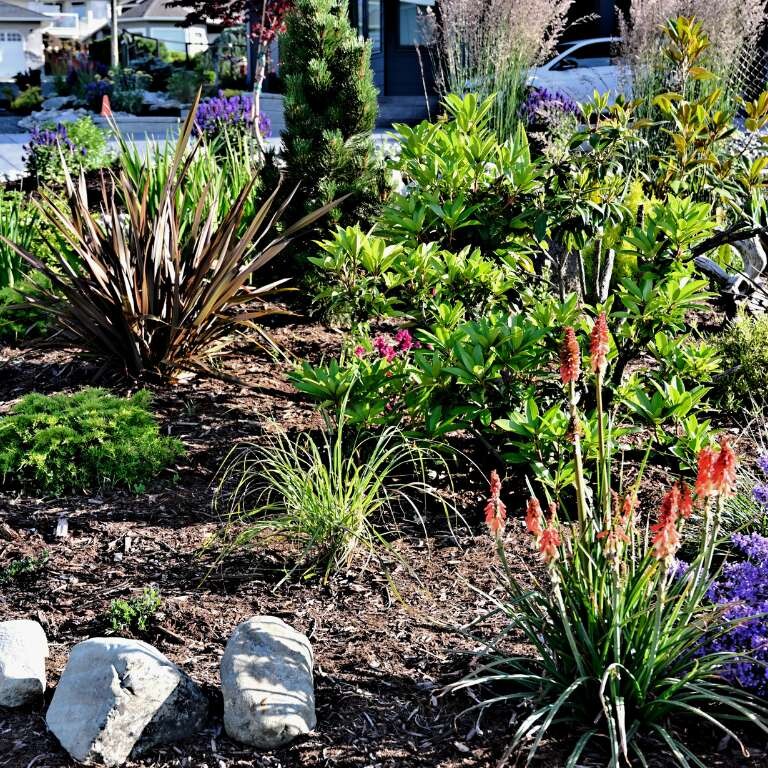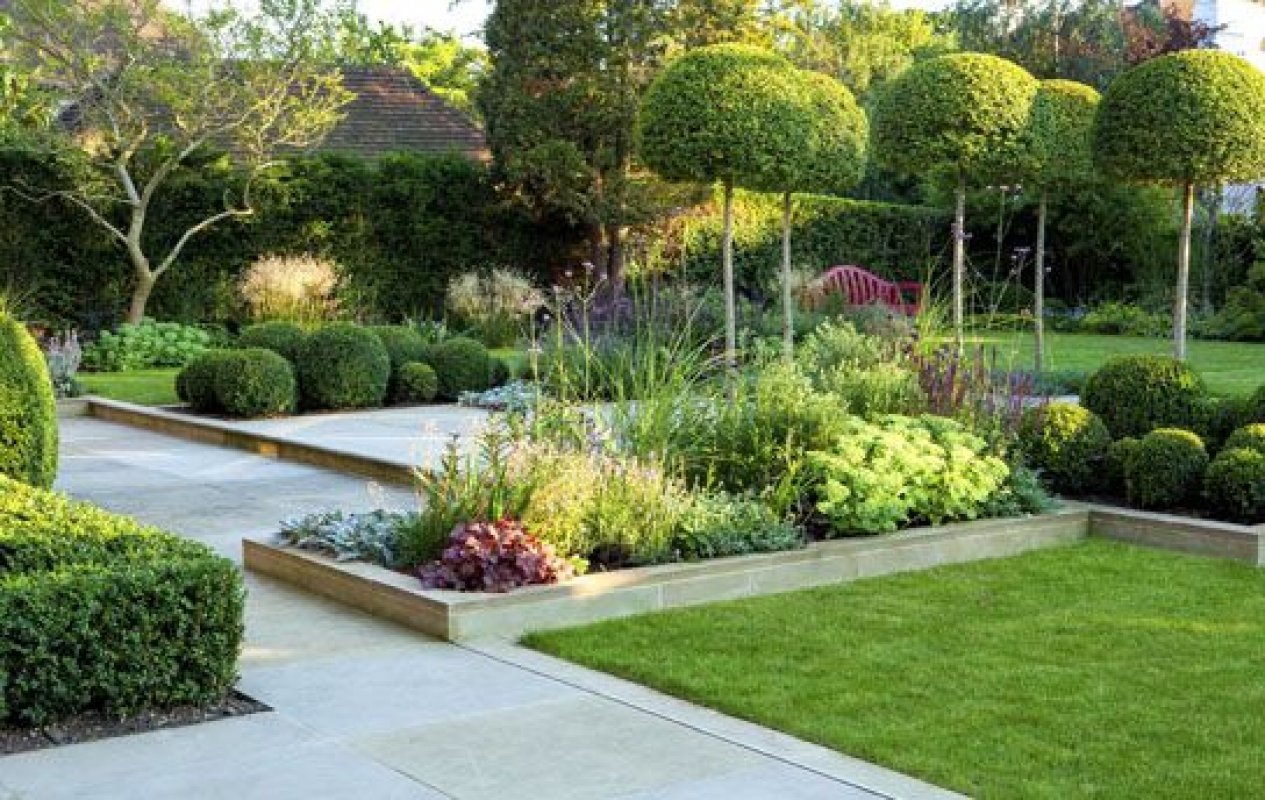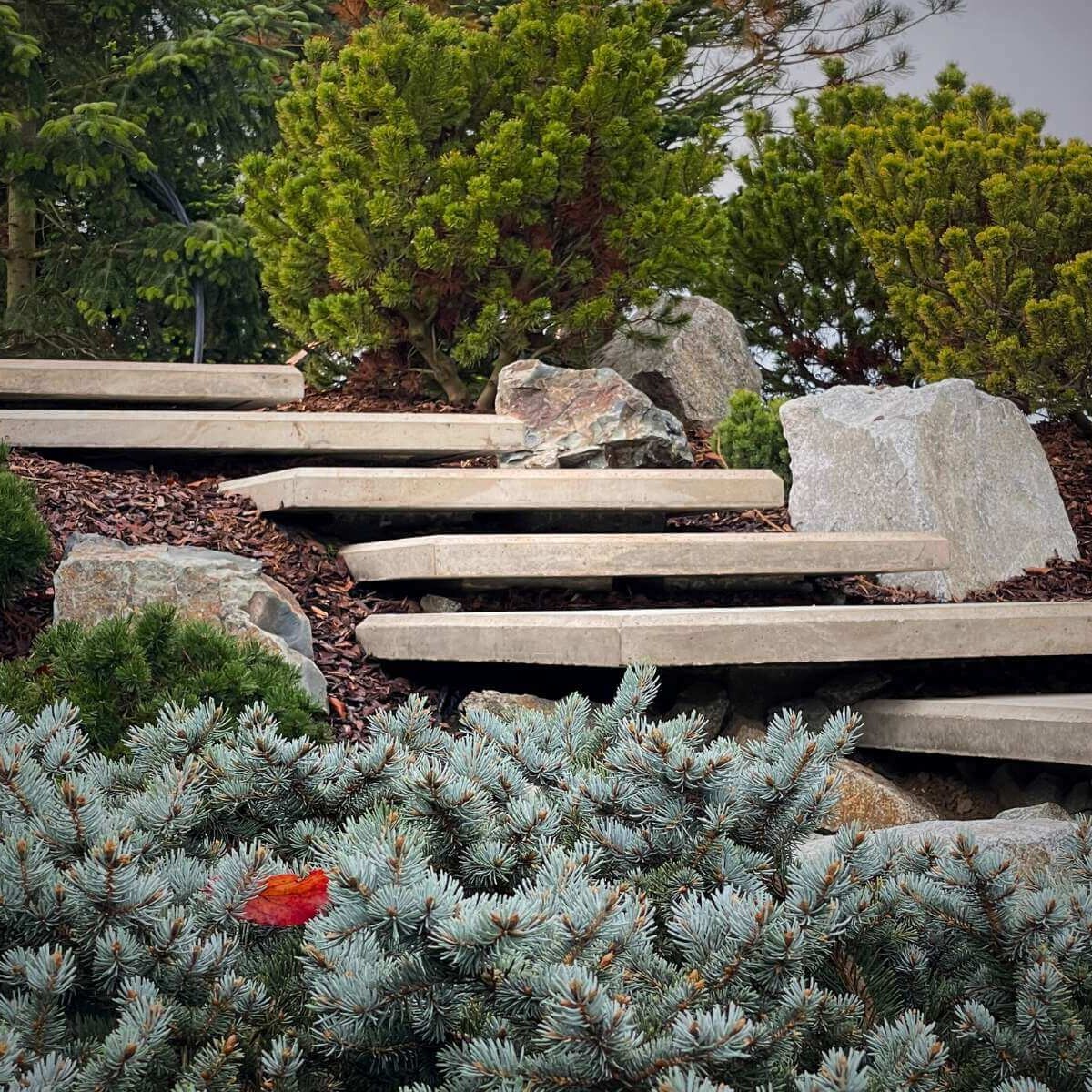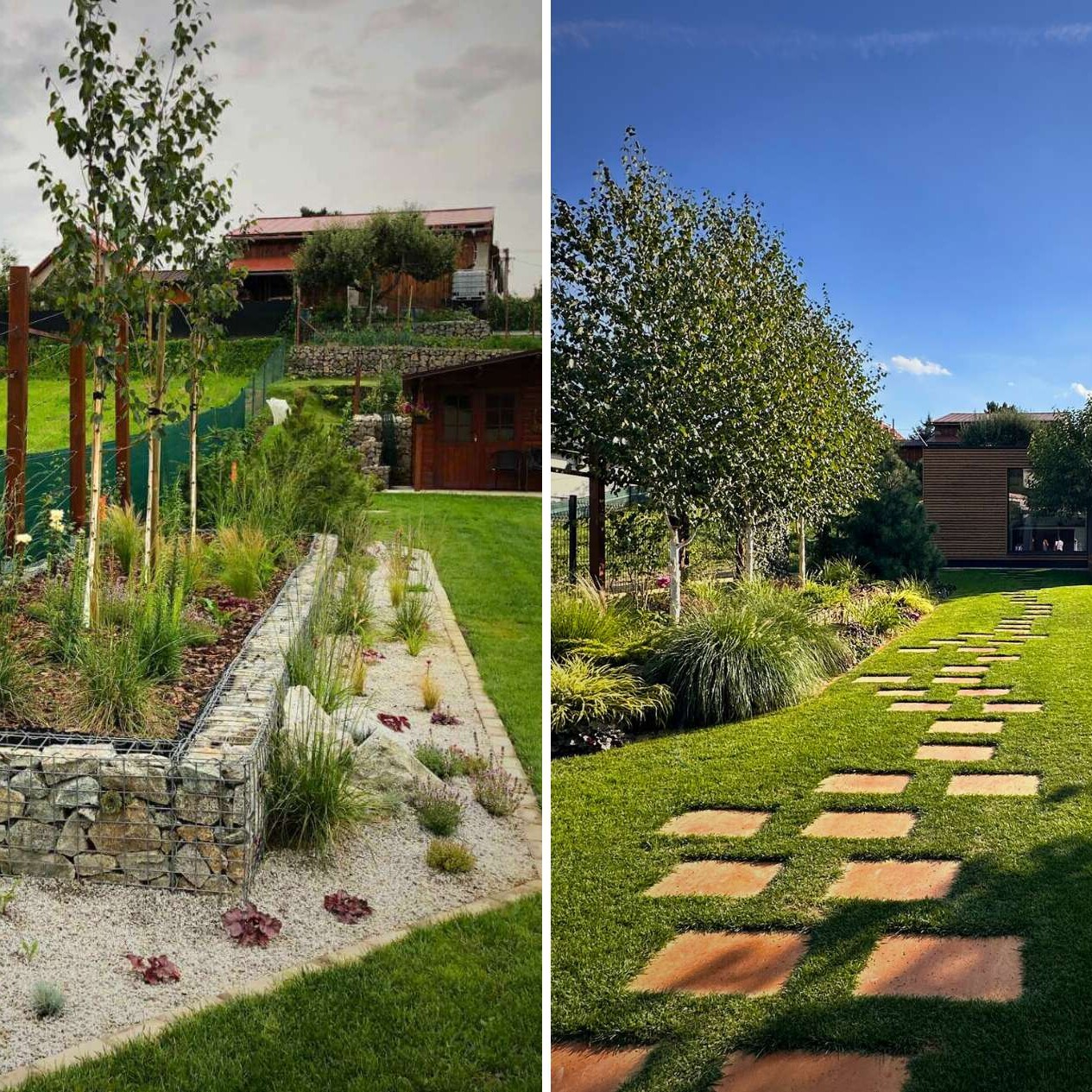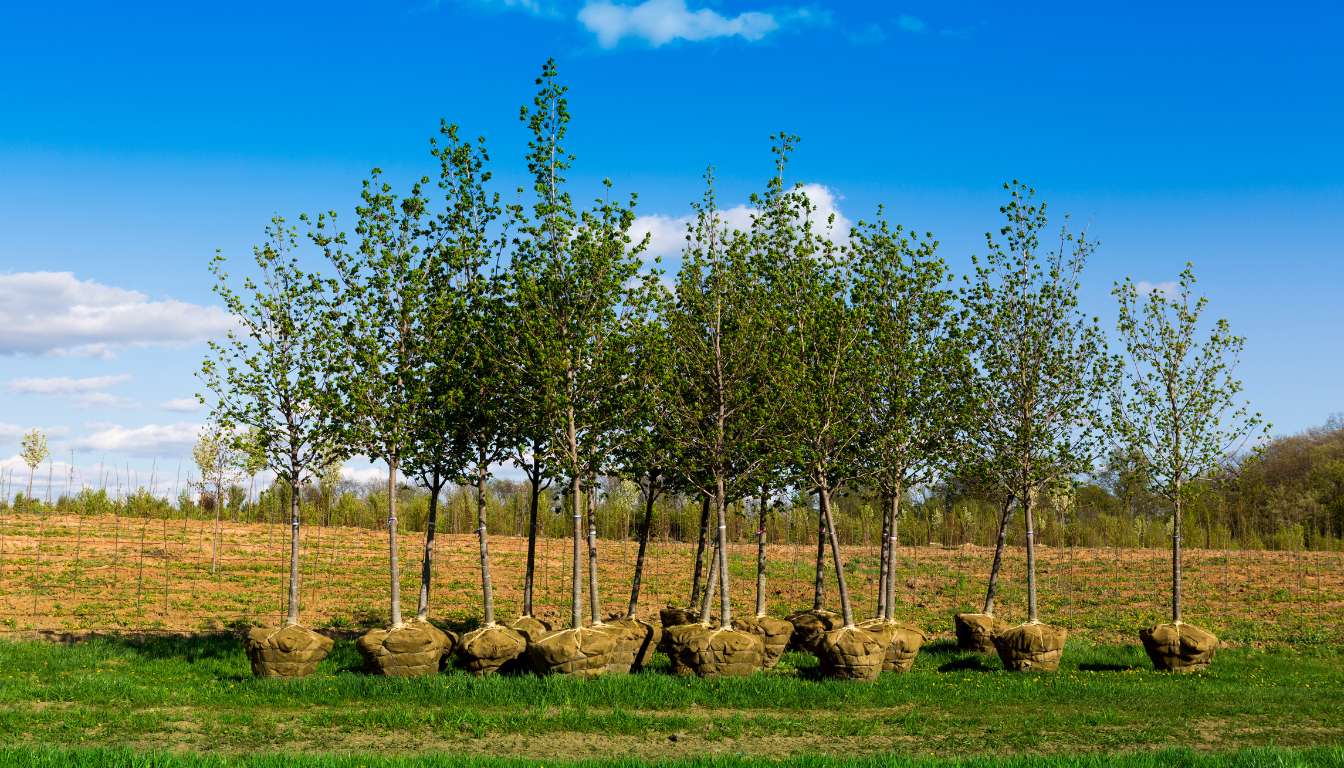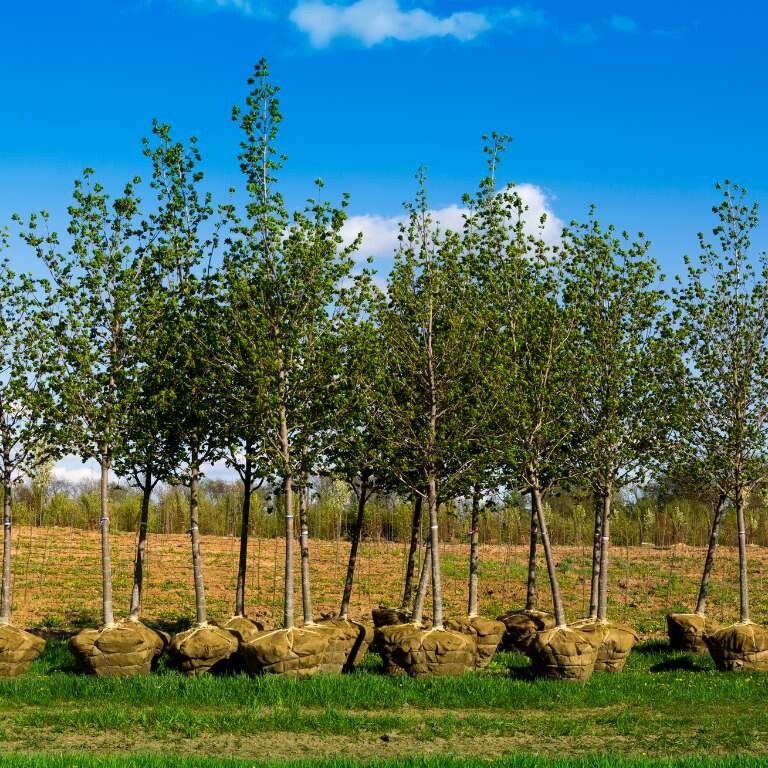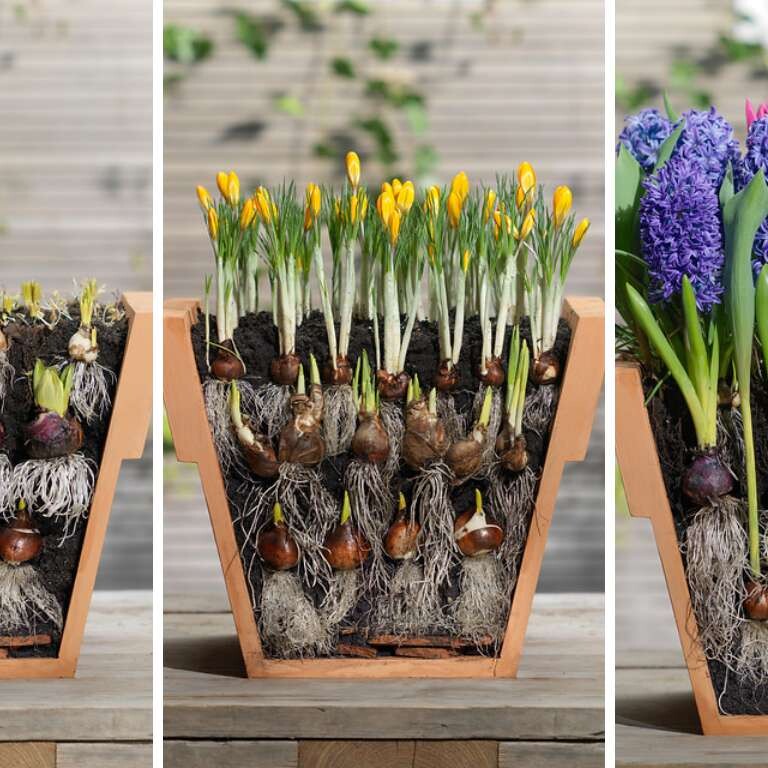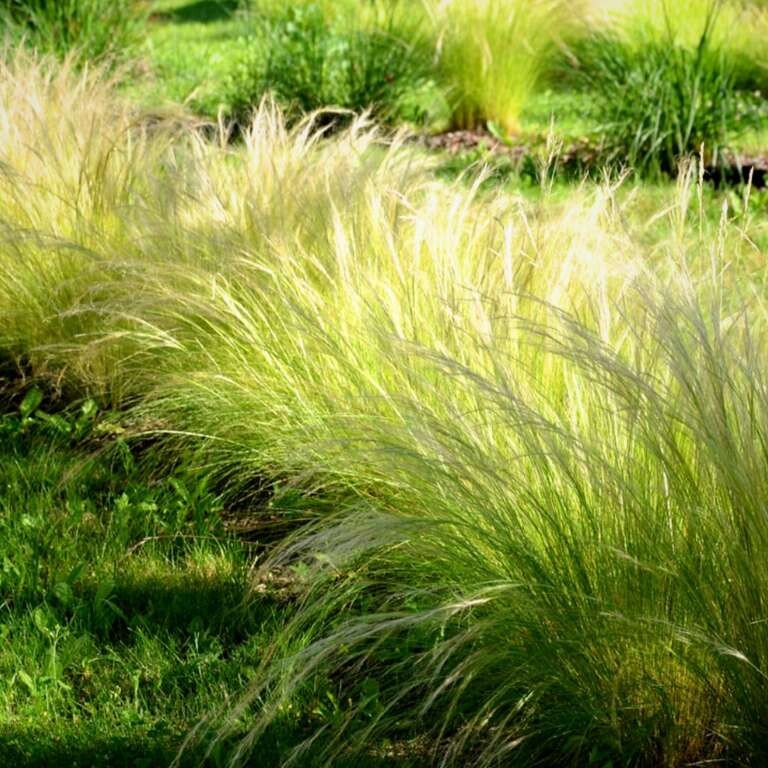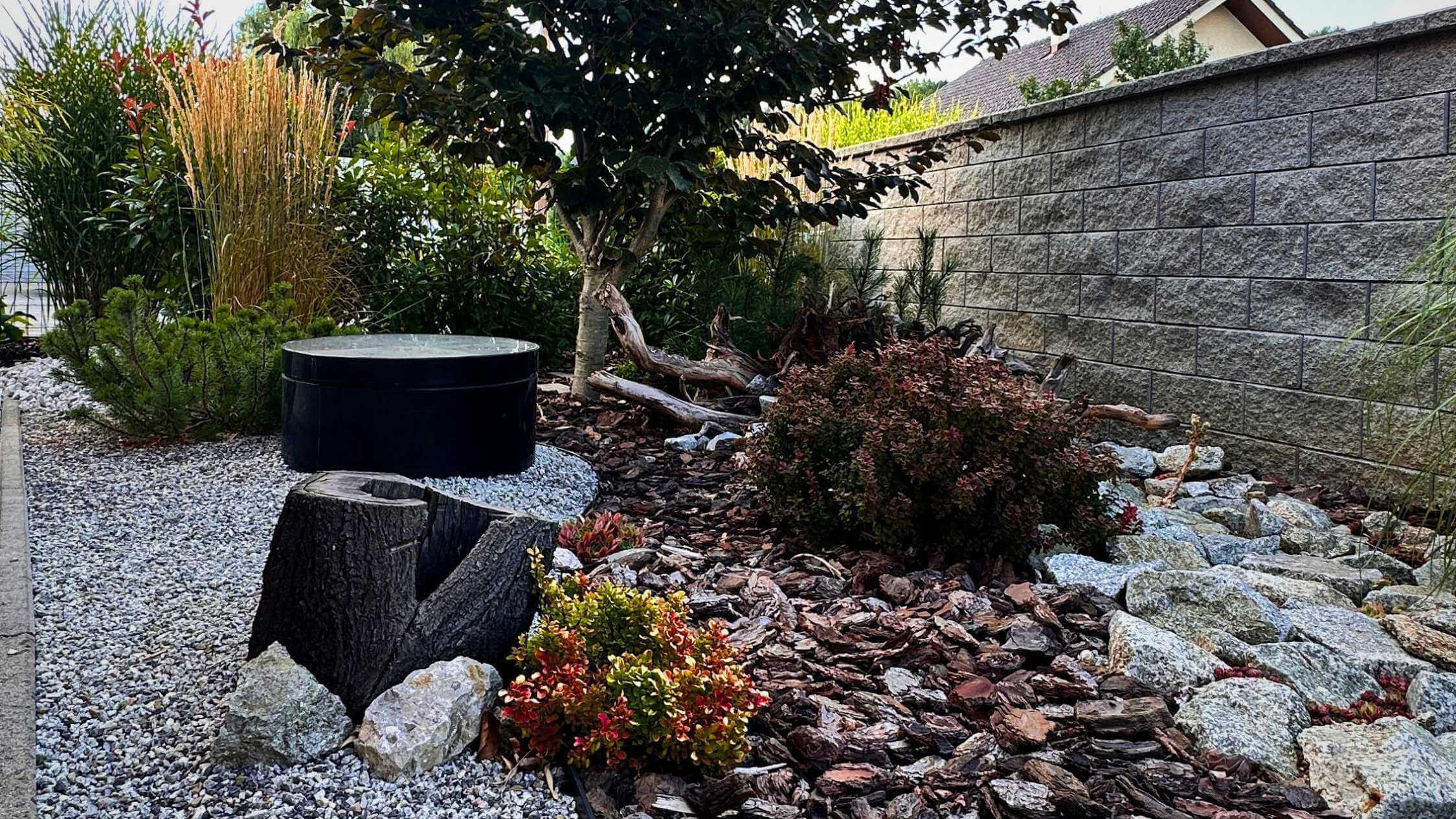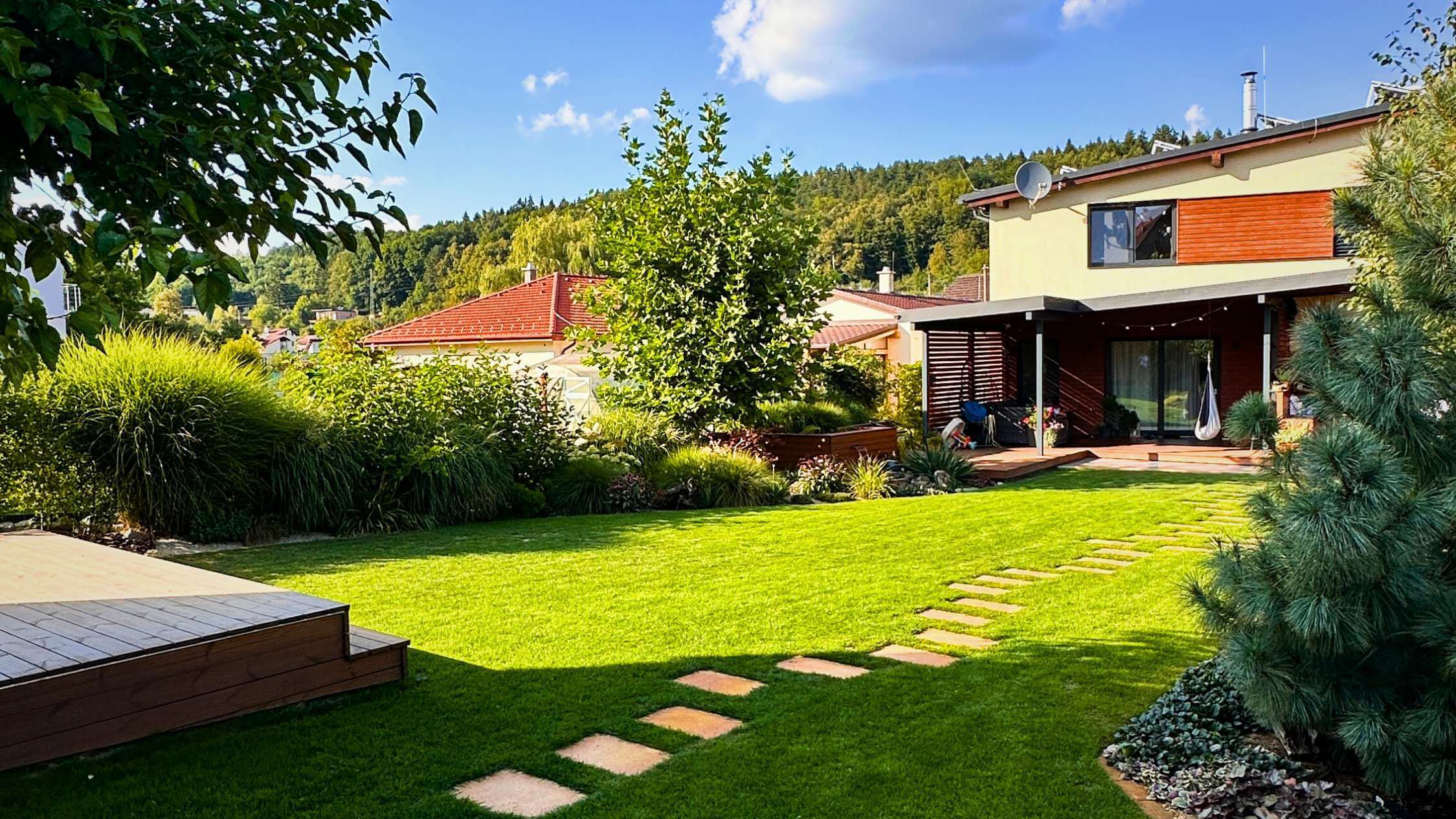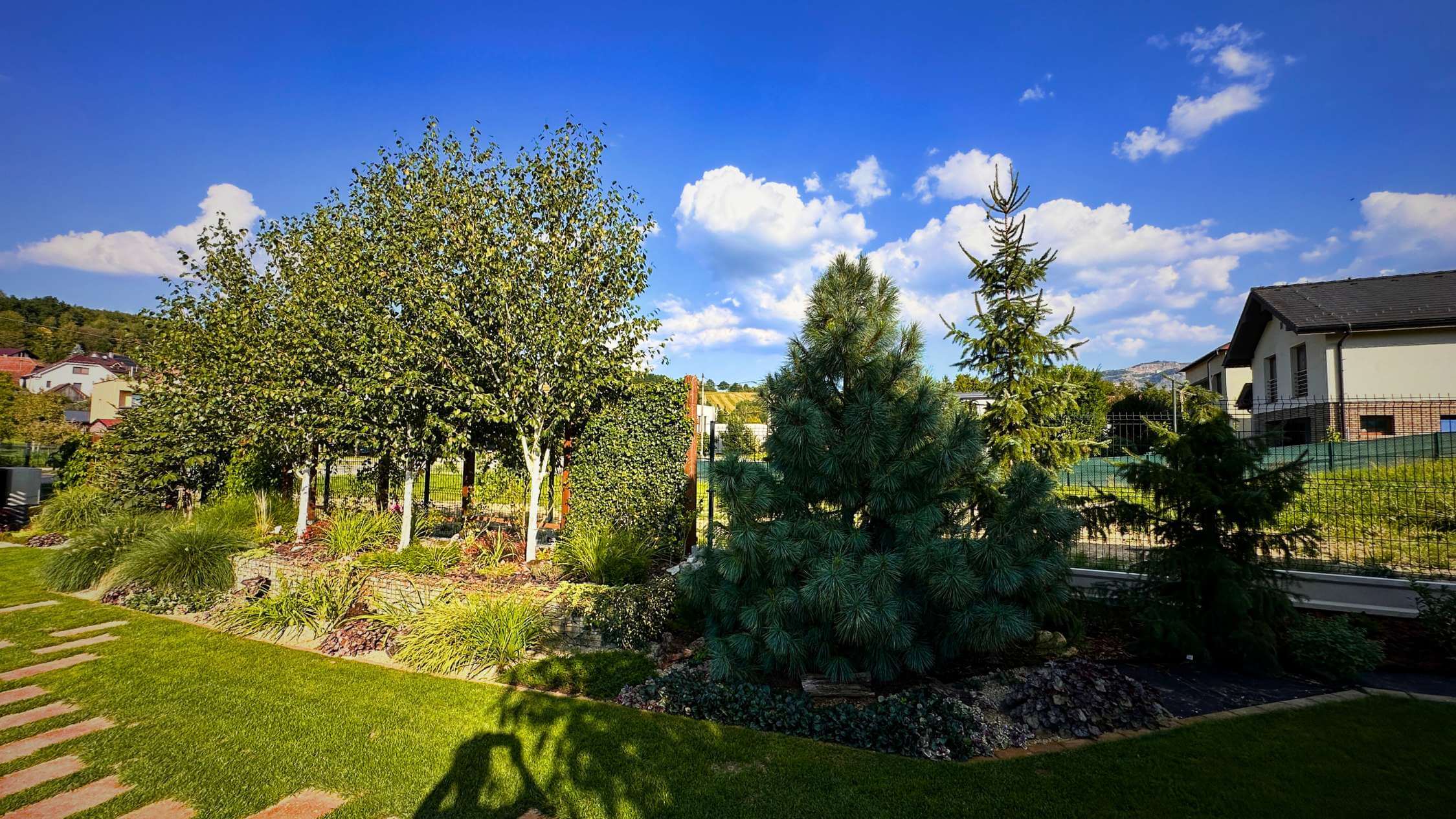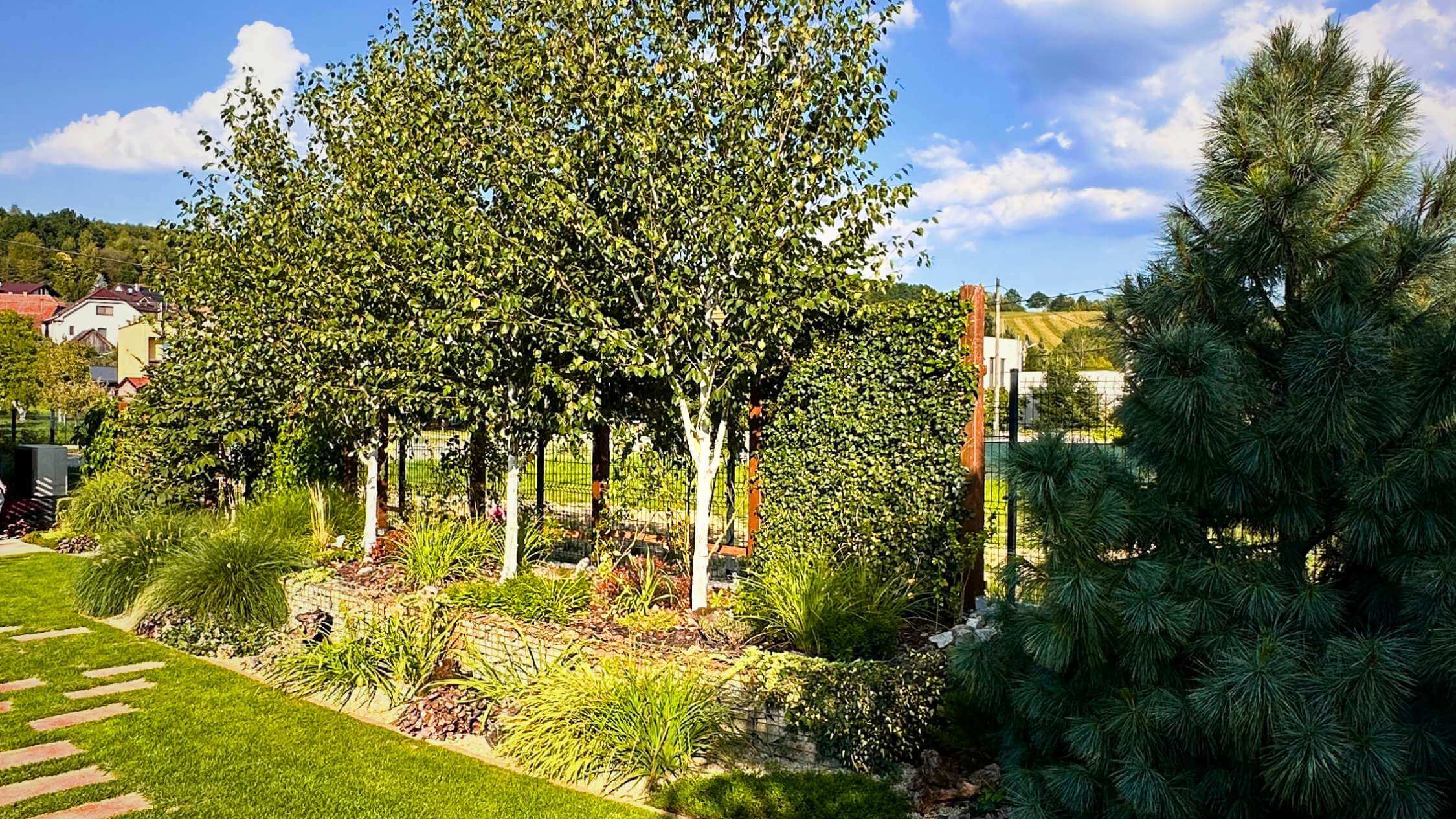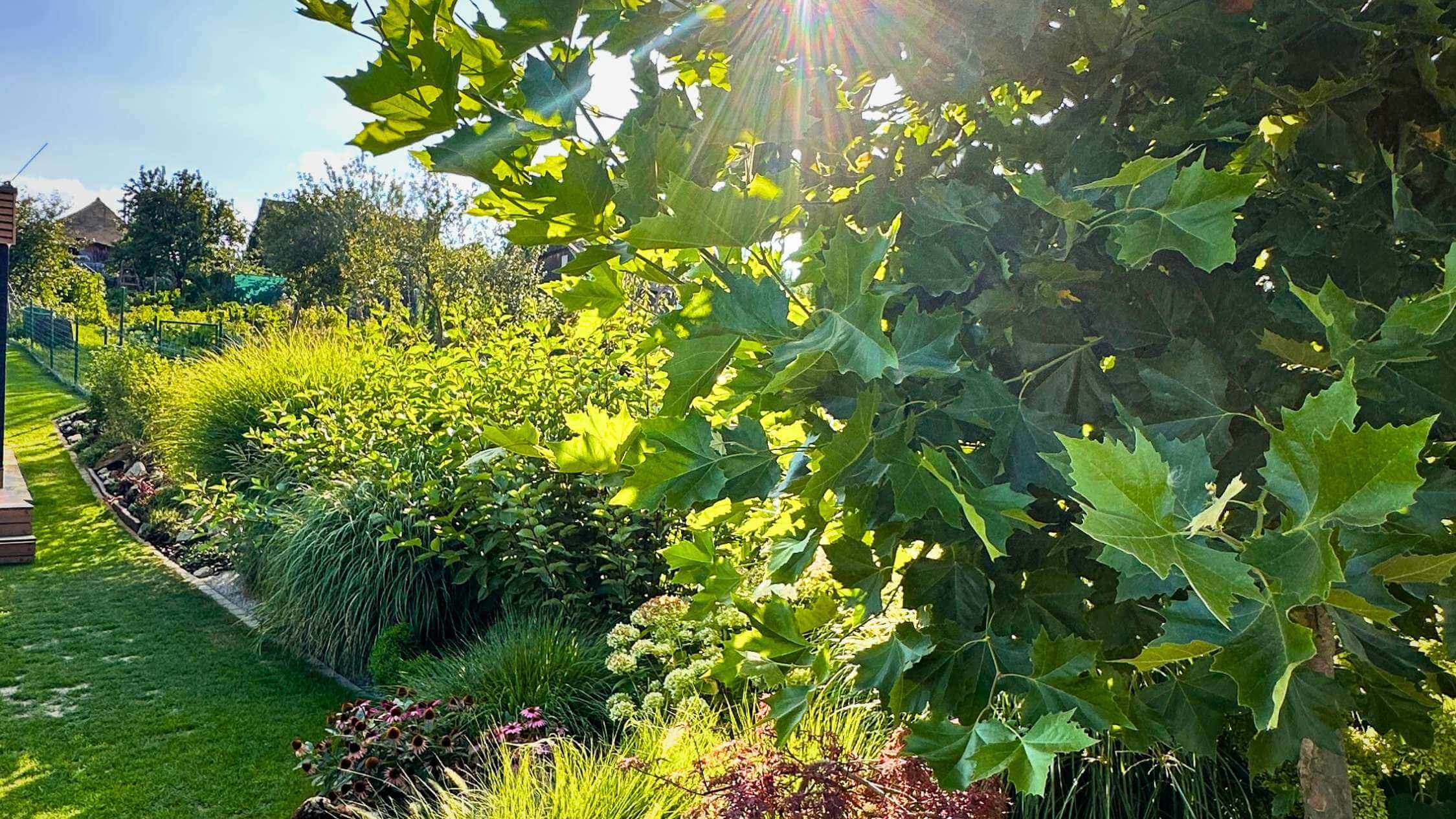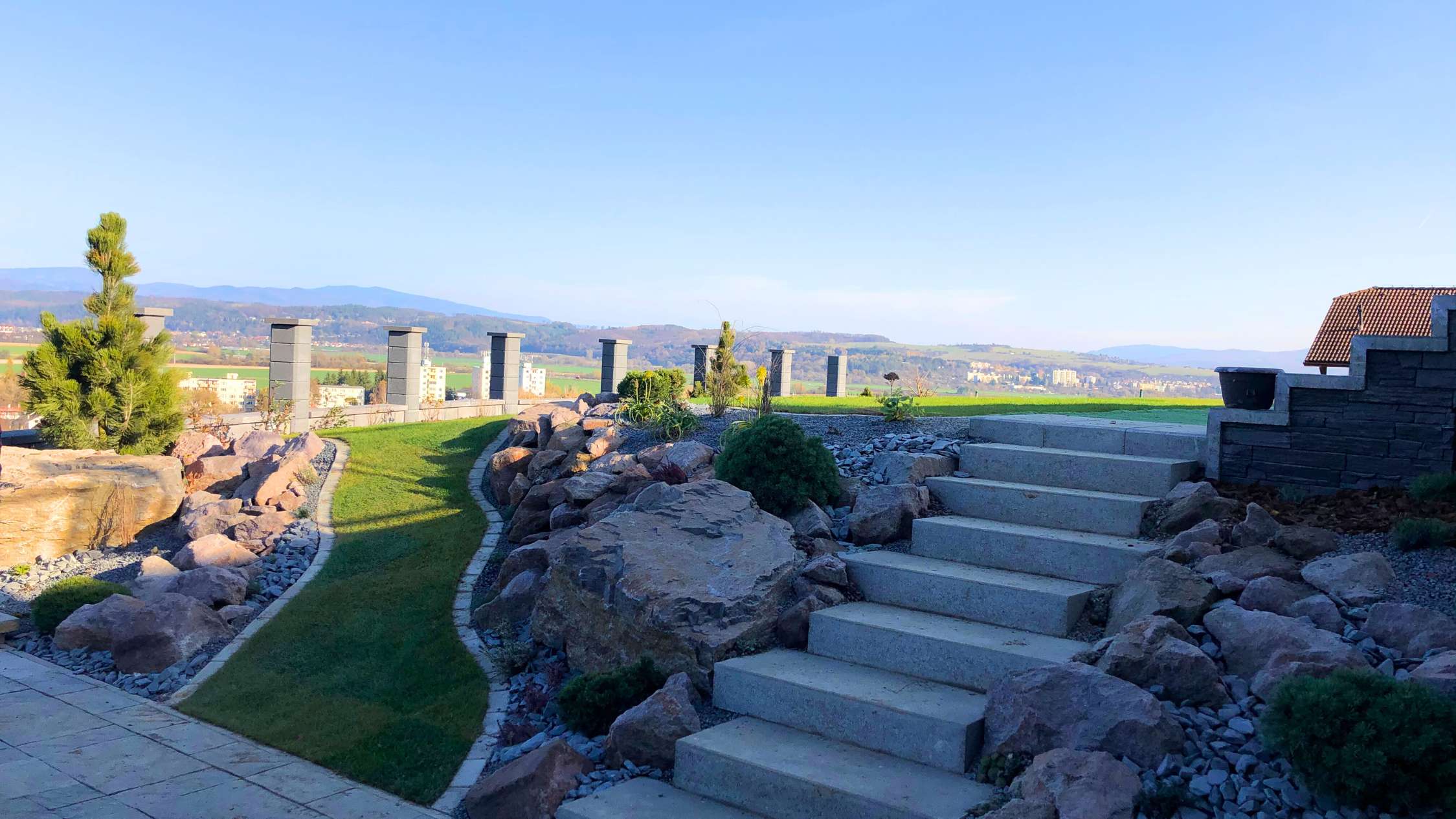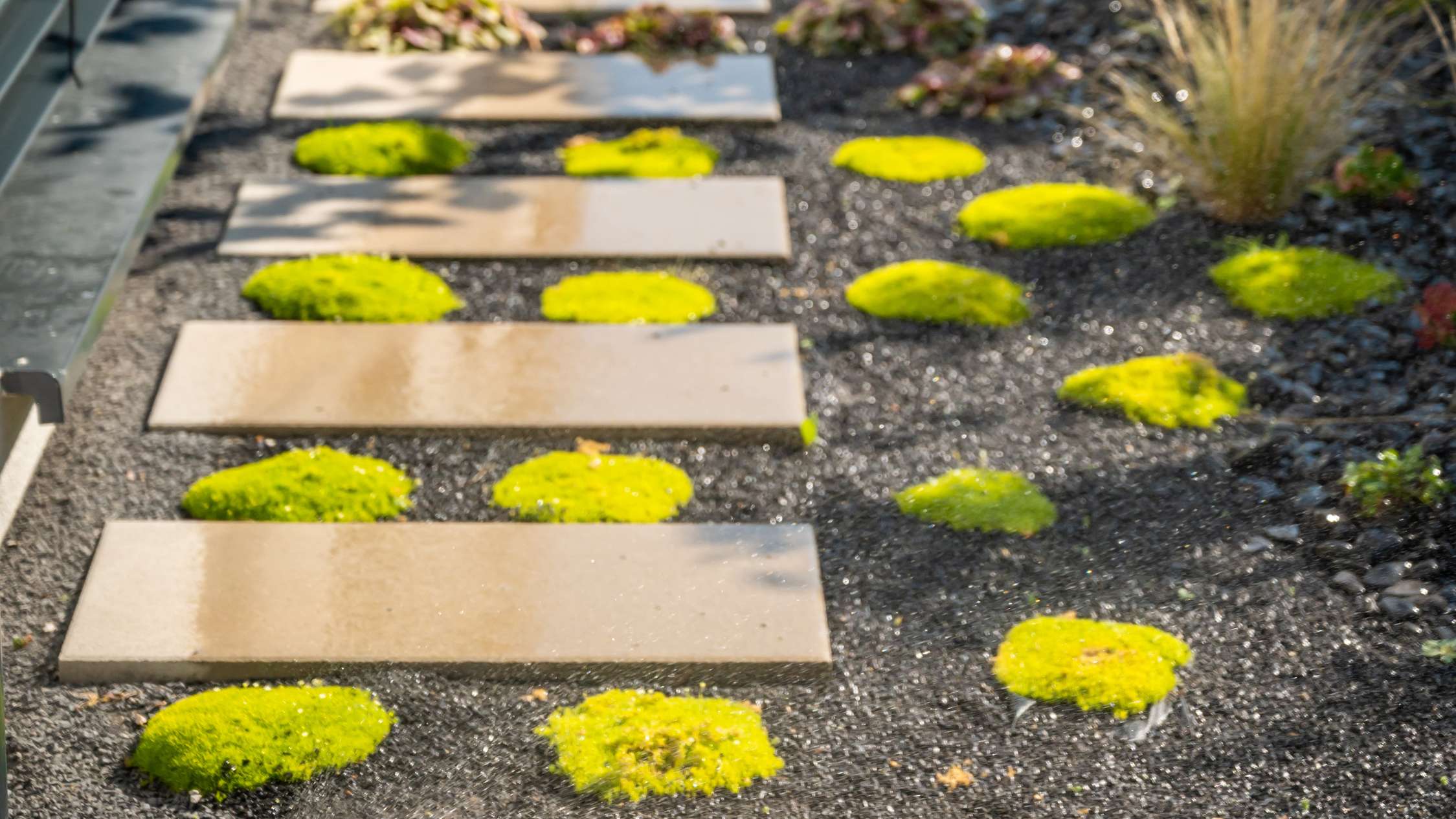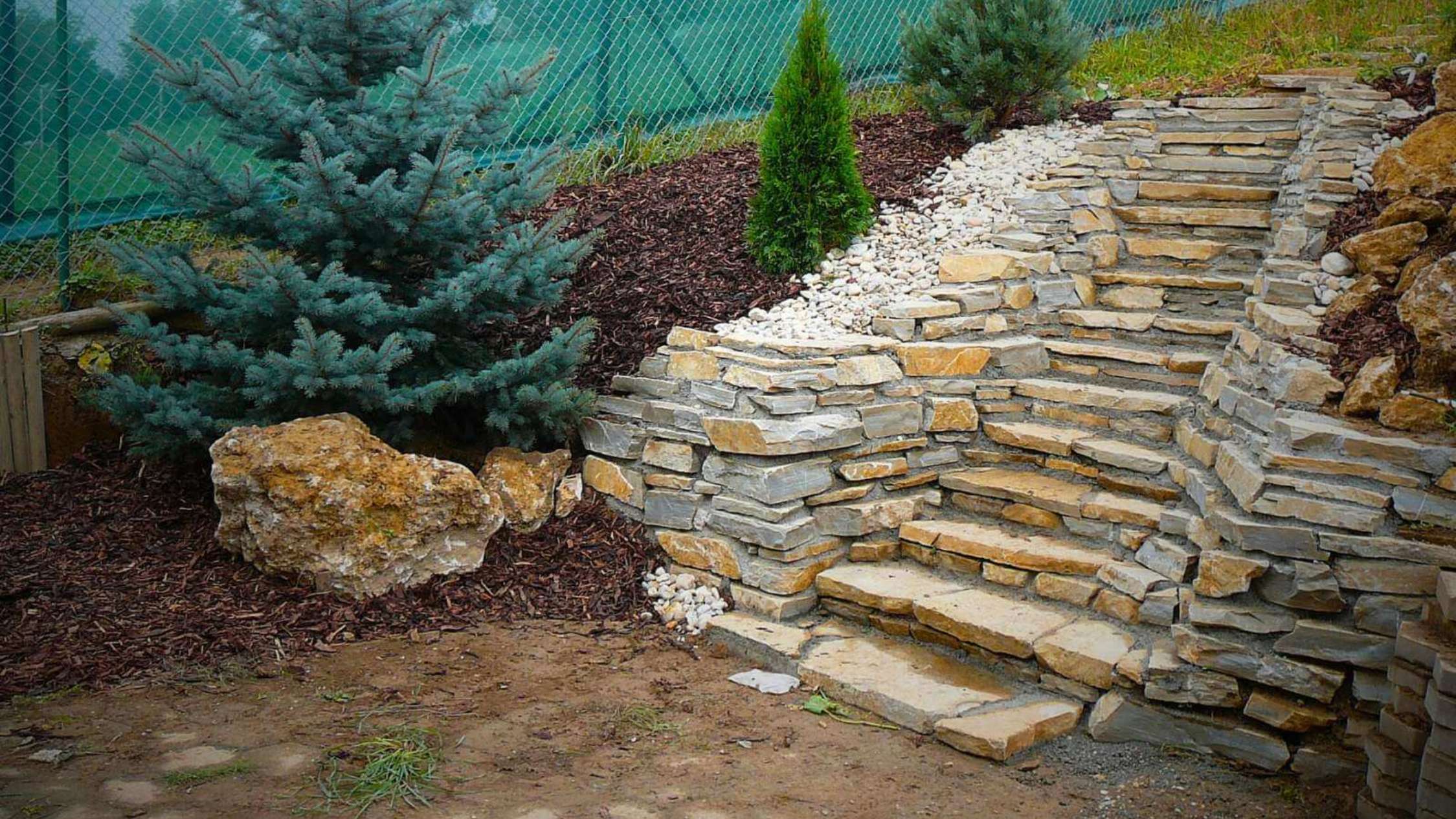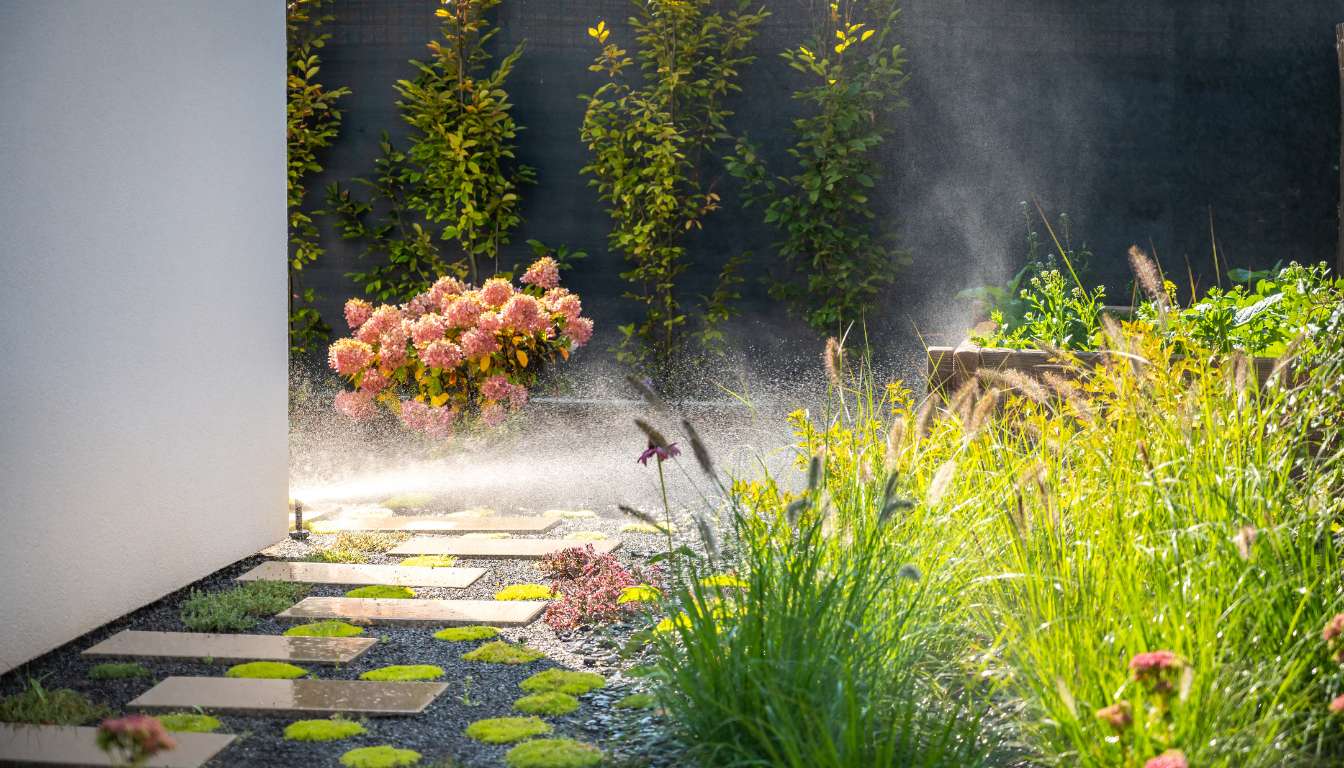How to involve children in gardening – learning through play and enjoying the results

Dominika
If you want to transform your exterior into the garden of your dreams, don’t forget to involve even the youngest members of your family in the process. How to involve children in gardening? Gardening is a great way to spend time together, teach children new skills, and encourage their relationship with nature. When designing a turnkey garden, we recommend leaving space in the project where children can express their creativity.
Why working in the garden with children is special
How to involve children in gardening? Working together in the garden develops the senses, teaches patience, promotes healthy exercise, and creates unforgettable experiences. Children perceive garden design and its elements through discovery, experimentation, and observation of change—whether it’s growing plants, watering the lawn, creating decorative stepping stones, or regular garden maintenance.
7 tips and activities for getting kids involved in a playful way
- Set aside a separate flower bed: Give children a piece of the garden to experiment with, for example, planting fast-growing herbs or flowering plants.
- Plant Mediterranean plants: Explain to them how overwintering and caring for exotic species works.
- Involve them in watering: Children love working with water, whether it’s caring for the lawn or watering plants.
- Raking hay, leaves, or grass: Combine outdoor exercise with practical tasks that are both fun and beneficial.
- Tasting the harvest: Gardening is not just work, but also the joy of seeing results – fresh fruit or vegetables will delight every little helper.
- Creating decorative elements: Painting stones, making a mini garden, or building wooden steps for a garden house.
- Keeping a garden diary: You will encourage curiosity and creativity and practice writing, drawing, and photographing your own projects.
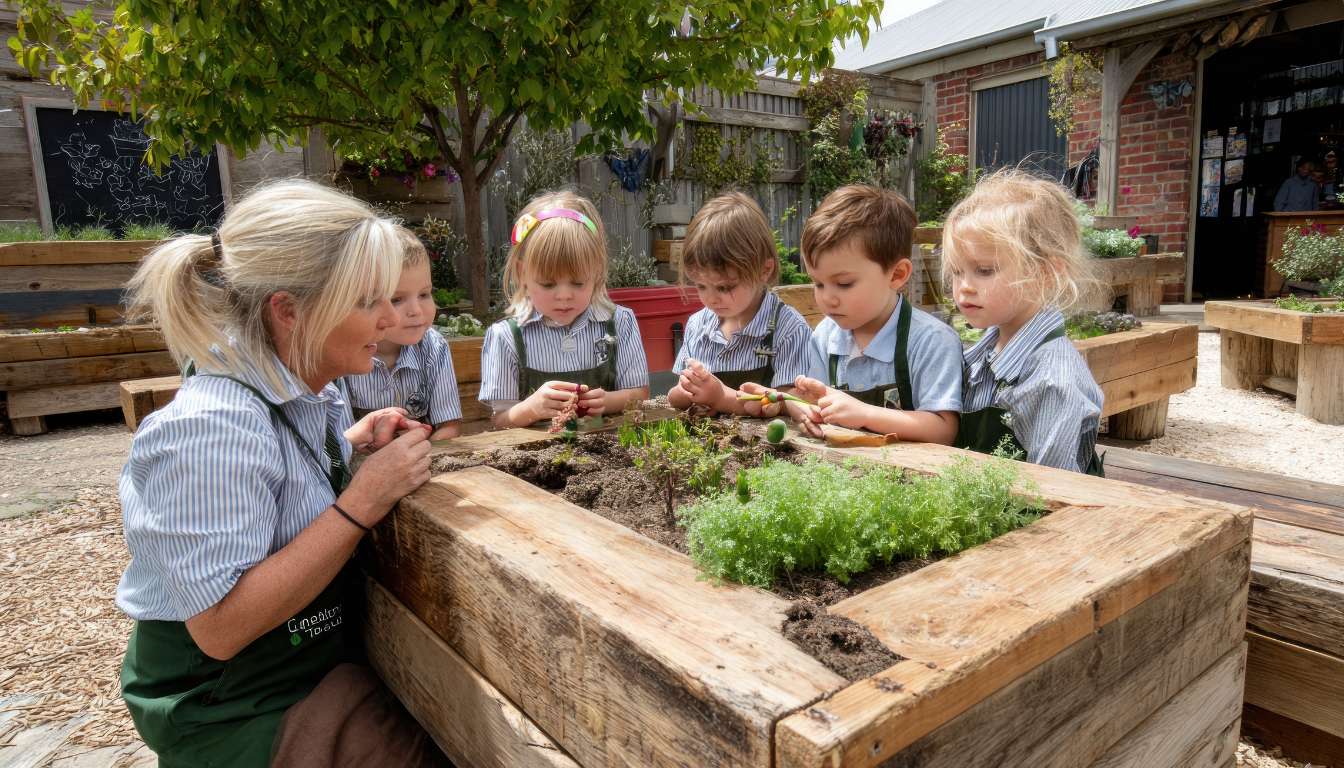
Learning through play and enjoying the results
Inspire your children with simple little projects that will give them quick results – whether it’s flowering plants, a carpet of grass, or their own mini vegetable garden. Through play, you can teach them the principles of garden design and how all the elements of a garden are connected. If you don’t feel confident about creating a complete garden, consult a professional. Also, don’t forget about regular maintenance and innovations, which can be a motivating experience for children.
When planning and building your dream family garden, keep in mind that the time spent working together with your children is the best investment in the future. With Dream Garden, you can create a space for learning, fun, and beautiful experiences for the whole family.
Similar posts
How to overwinter Mediterranean plants and prepare them for the next season

Dominika
Mediterranean plants bring a holiday atmosphere to our gardens – the scent of the sea, sun, and south. How to overwinter Mediterranean plants? Olive trees, oleanders, lavender, and citrus trees have become an integral part of modern garden design. But while they survive the winter without any problems in the Mediterranean, they need special care here to wake up to their beauty again in the spring.
Why overwintering is important
If you dream of having your own dream garden full of exotic greenery, winter care is key. How to overwinter Mediterranean plants? Mediterranean plants such as oleander, olive trees, citrus fruits, rosemary, and lavender come from warm regions, so they do not tolerate prolonged frosts well. Proper winterization is essential if you want to use them in your garden in our region.
The right conditions for overwintering
- Light and heat: Plants such as oleander and citrus trees require a bright location with a temperature between 5 and 12 °C. Ideally, they should be moved to a winter garden, garage, or basement with a window.
- Watering: Water plants only lightly during winter – the soil should remain slightly moist, not soggy.
- Protection from frost: If the plants are planted in a flower bed, cover them with gardening fabric, straw mats, or a layer of leaves.
- Citrus and olive trees in pots: Bring them indoors before the first frost. In cold areas, it is advisable to grow them in mobile containers that can be easily moved.
Ideal species for a turnkey garden
If you are planning a turnkey garden, Mediterranean plants can transform your outdoor space beyond recognition. Recommended species for Slovak conditions are:
- European olive tree (Olea europaea) – a symbol of the south, suitable for growing in pots.
- Oleander (Nerium oleander) – blooms all summer, but cannot tolerate frost.
- Rosemary (Rosmarinus officinalis) and lavender (Lavandula angustifolia) – more resistant species that can be grown even in soil with minimal protection.
- Lemon tree (Citrus limon) – a popular decorative tree that can bear fruit indoors during the winter.

Stredomorská atmosféra aj počas zimy
Súčasťou profesionálneho záhradného dizajnu je aj plán starostlivosti o rastliny počas celého roka. V Dream Garden pri tvorbe každej záhrady snov kladieme dôraz nielen na krásu, ale aj na funkčnosť a trvácnosť. Pomáhame klientom s údržbou a zazimovaním rastlín tak, aby ich exteriér žil naplno počas každej sezóny.
Pripravíme aj vašu záhradu na zimu
Ak máte v záhrade stredomorské rastliny a nie ste si istí, ako im pomôcť prečkať zimu, obráťte sa na nás. Radi navrhneme riešenie pre ich ochranu alebo sa postaráme o kompletnú realizáciu záhrady na kľúč, ktorá bude krásna a praktická po celý rok.
Similar posts
Types of gardens: find your style and create the garden of your dreams

Dominika
A garden is not only a place to relax, but also a space that reflects the personality of the owner and the style of the house. The right type of garden can completely change the atmosphere of your exterior and create a space where you will feel comfortable every day. Whether you are planning the layout and design of your garden or its complete turnkey implementation, choosing the right style is key.
Family garden
A family garden is ideal for households with children and pets. It combines lawns, safe walkways, a playground, a small pond or pool, and cultivated flower beds. When creating your dream garden, functionality and safety are key so that every member of the family can enjoy the outdoors to the fullest.

Modern garden
A modern garden is characterized by clean lines, geometric shapes, and minimalist flower beds. Materials such as composite, concrete slabs, metal, and glass are used, often complemented by designer lighting and water features. When planning and designing a modern garden, it is important to achieve harmony between the aesthetic appearance and functionality of the exterior.
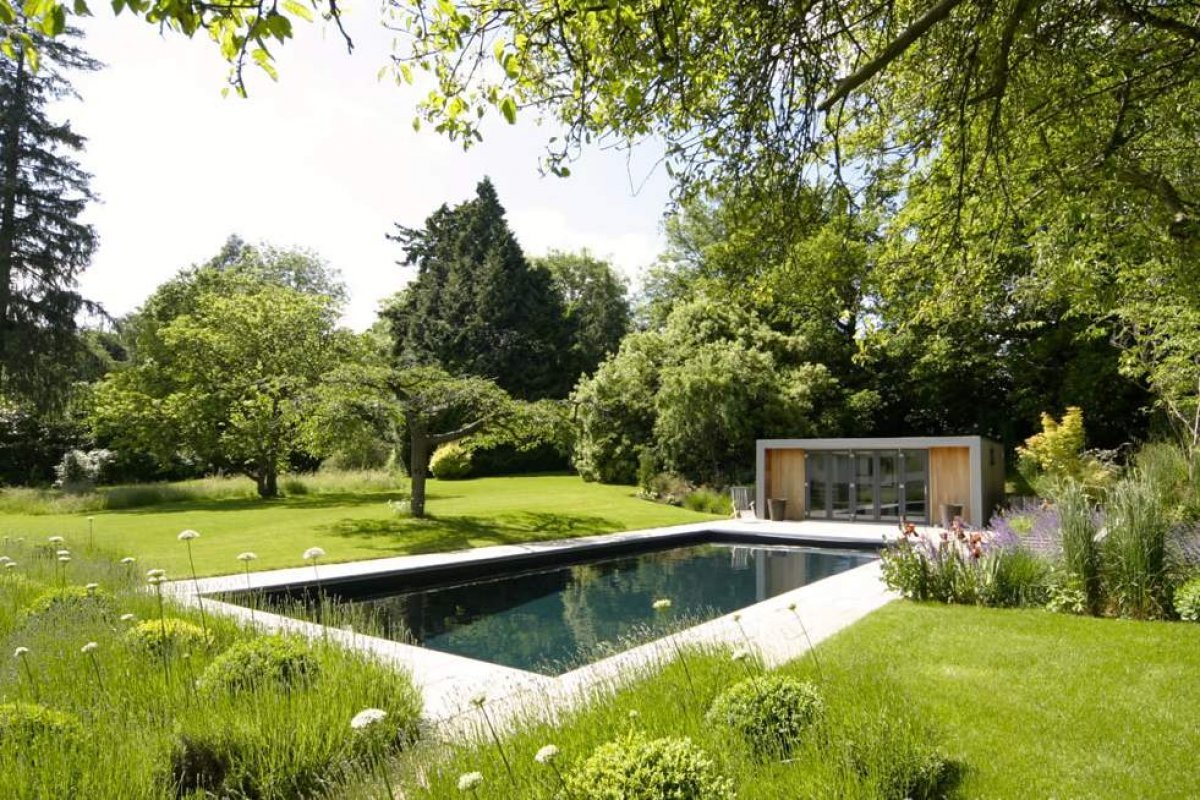
Minimalist garden
The motto of a minimalist garden is “less is more.” It uses fewer plants, neutral colors, simple materials, and clean lines. Such a garden is not only elegant but also easy to maintain, which is often part of the implementation of a turnkey garden.
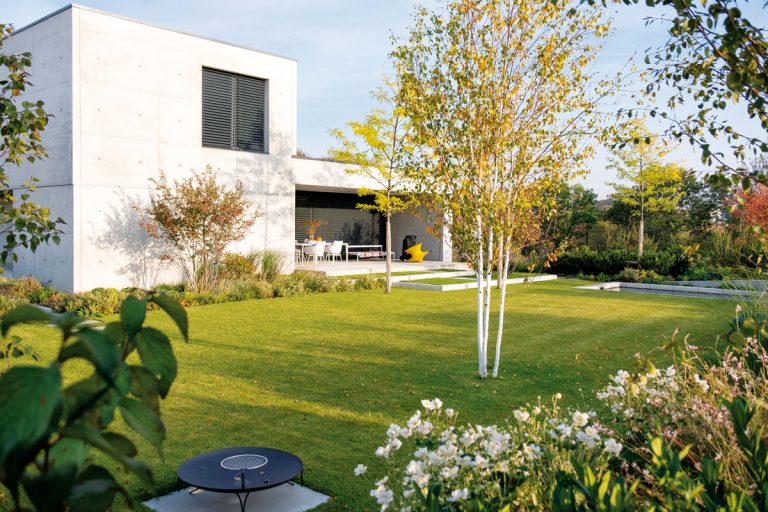
Natural garden
A natural garden mimics the wild and promotes biodiversity. It contains native plants, flower meadows, grasslands, ponds, and stone paths. The design and layout of the garden emphasizes ecological balance and sustainability. This type of garden has a relaxed and harmonious feel.
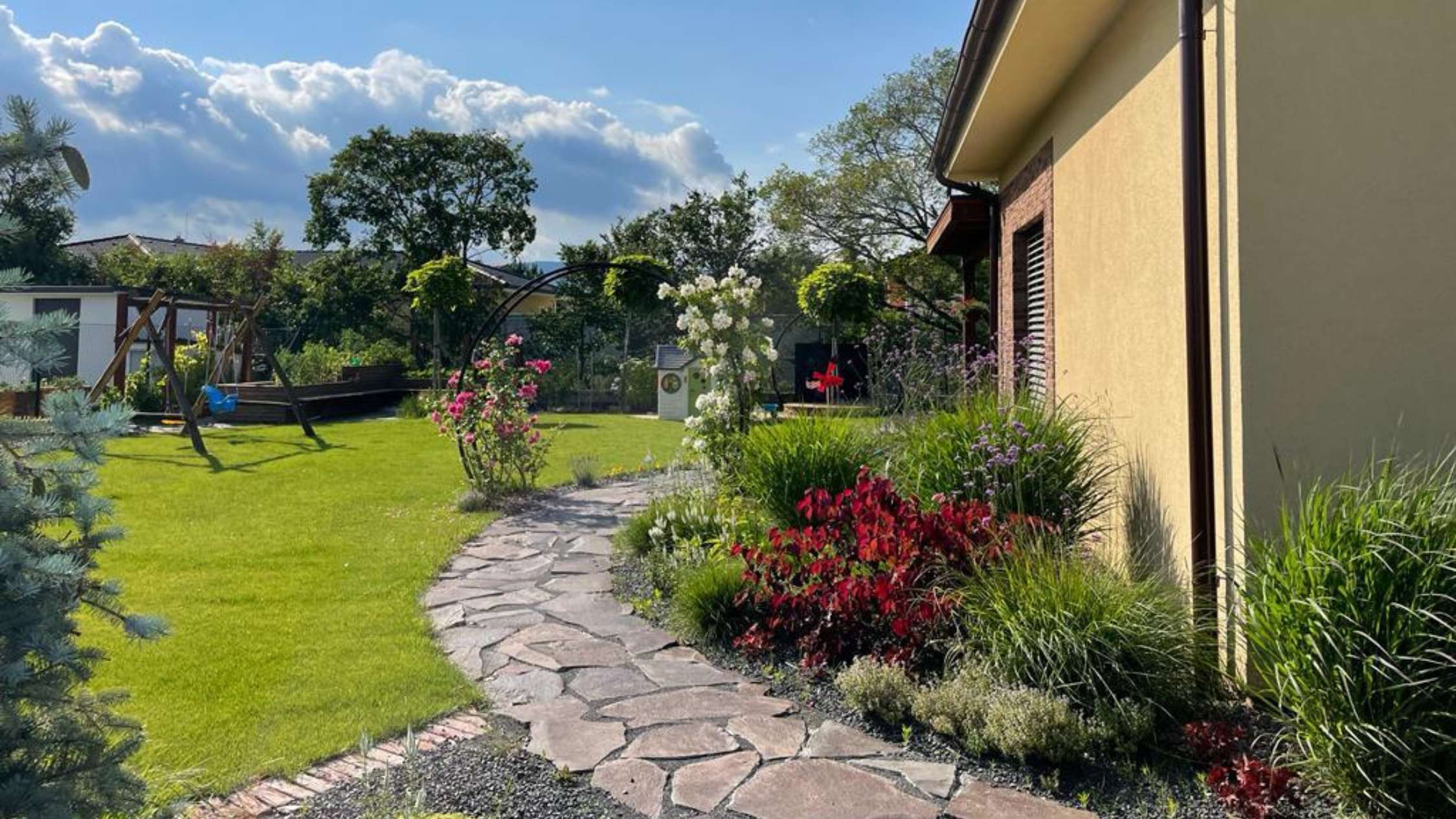
Utility garden
A utility garden combines functionality and aesthetics. It is used to grow vegetables, fruit, and herbs, often supplemented with vertical beds, greenhouses, or aesthetically designed flower beds. Creating a dream garden in this style allows you to have a beautiful and practical exterior.
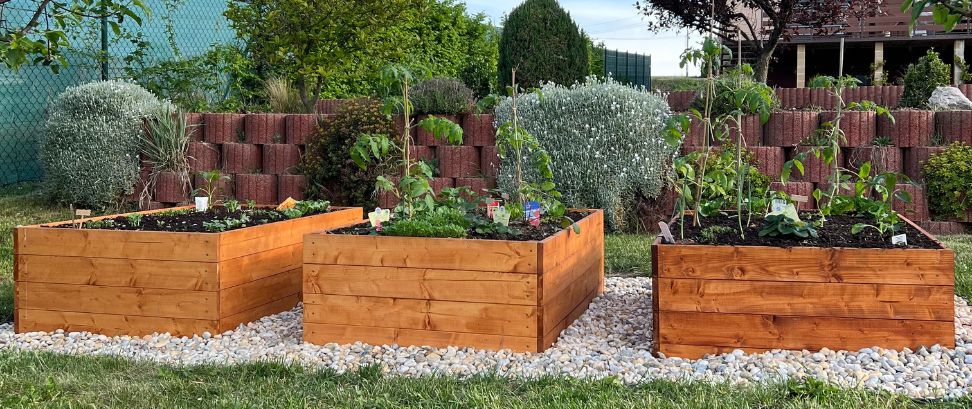
Classic garden
A classic garden is symmetrical and elegant, often with regular flower beds, hedges, and manicured lawns. When planning and designing a garden, attention is paid to formal appearance and traditional elements that create a harmonious and representative exterior.
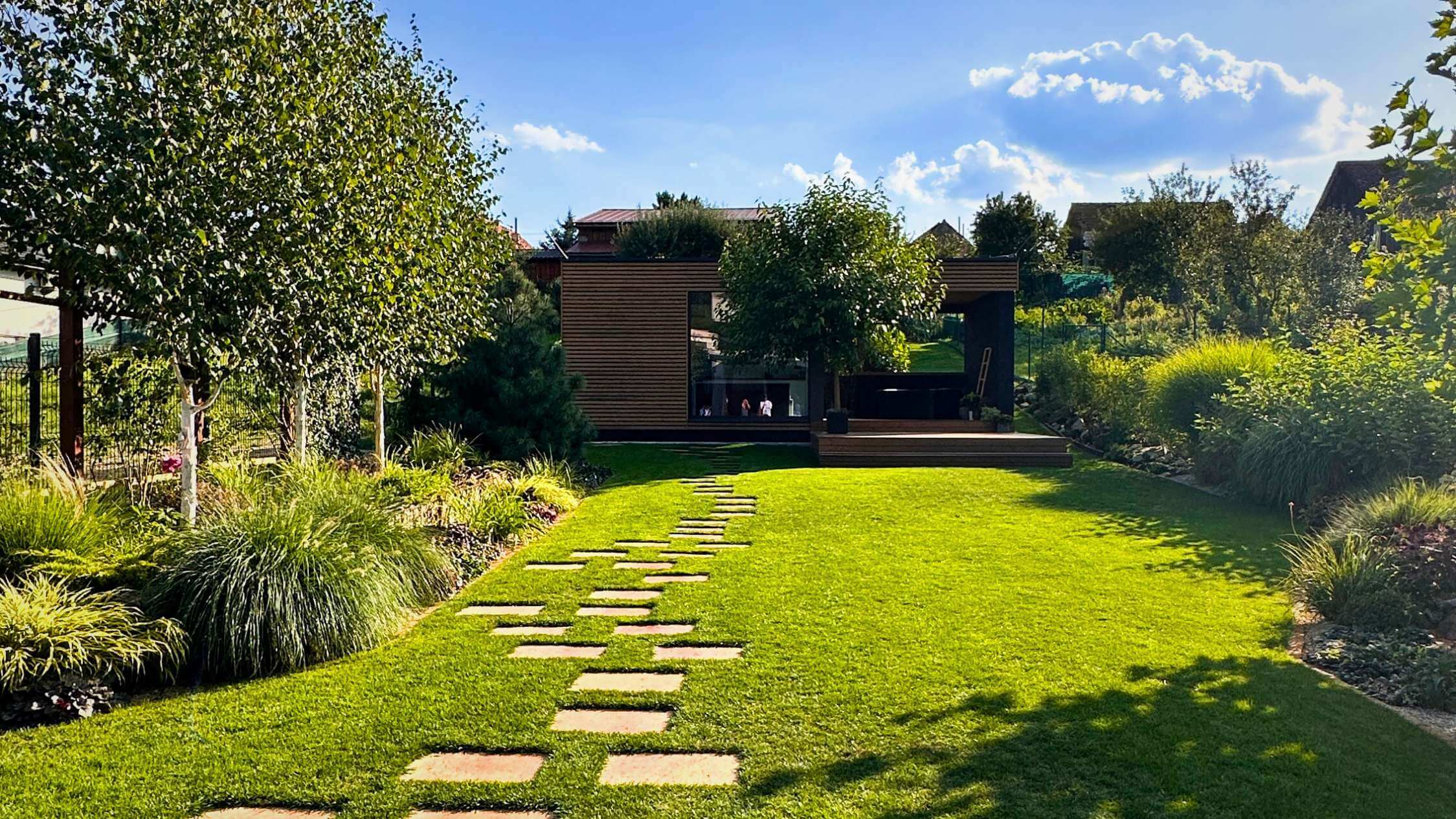
Country garden
A country garden has a rustic and cozy feel. It is characterized by loosely arranged flower beds, fruit trees, wooden walkways, and natural decorations. When creating a turnkey garden, we strive to preserve the natural and nostalgic character of the exterior.

Ornamental garden
An ornamental garden focuses on visual effect – colorful flowers, solitary trees, fountains, and garden decorations. When planning and designing a garden, emphasis is placed on aesthetics and harmony of color and shape combinations to create the effect of a “dream garden.”
Each type of garden has its own style, function, and level of maintenance. When creating a turnkey garden, it is important to consider the size of the plot, the owner’s requirements, and the chosen style so that the exterior appears harmonious, aesthetic, and practical at the same time. We are here to advise you and help you create your dream garden, from design to complete implementation.

Similar posts
How to prepare your garden in autumn: what to do now so that it comes to life in all its glory in spring

Dominika
Autumn is the time when the garden slowly settles down for a rest. How to prepare your garden for autumn? This is the time to take steps to ensure that your dream garden awakens in full force and beauty in the spring. If you want to have a minimum of work and maximum enjoyment in the spring, it is worth preparing the soil, plants, and lawn now.
Lawn care
The lawn is the calling card of every garden. In autumn, treat it to:
- scarification or aeration,
- fertilization with potassium-rich autumn fertilizer,
- thorough raking of leaves, which could otherwise cause mold growth.
If you are planning to create or modernize your garden, autumn is the ideal time to prepare the ground, install irrigation, or lay a lawn.
Caring for perennials and ornamental plants
Not all perennials are pruned in autumn. Proper care will help them survive the winter and promote growth in the spring.
Perennials that are suitable for pruning:
- peonies,
- delphiniums,
- phloxes,
- hostas,
- lilies.
Perennials that should not be pruned:
- ornamental grasses (e.g., pampas grass, fescue),
- lavender,
- echinacea,
- rudbeckia,
- sedum.
Leave these over the winter—their above-ground parts will protect the roots and also beautify the garden.
Harvesting and caring for fruit trees
If you have fruit trees, don’t forget to harvest the last of the crop and then remove any remaining fruit from the trees and the ground to prevent the spread of disease. It is also a good idea to spray preventively against pests.
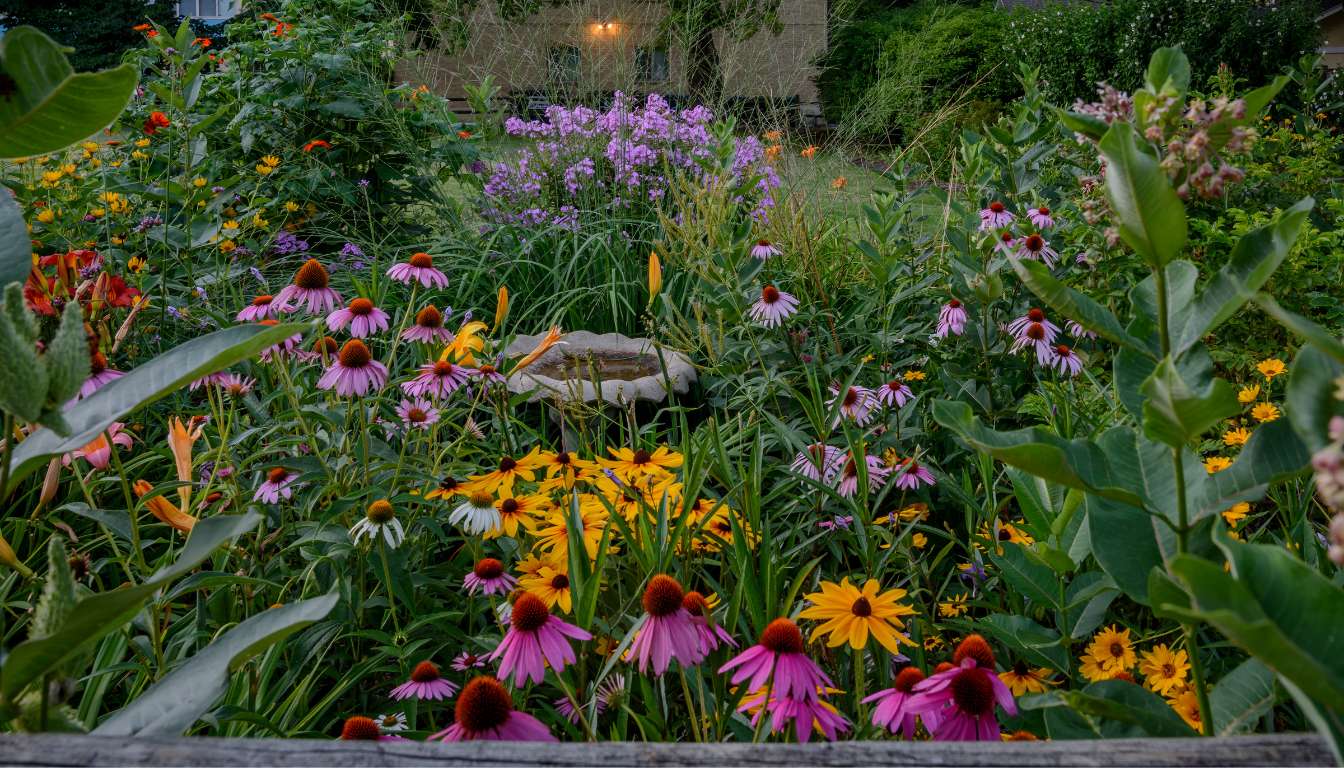
Planting bulbs
Autumn is the time to plant spring bulbs – tulips, daffodils, and crocuses. In spring, they will reward you with an explosion of color.
Turnkey garden preparation
If you dream of opening your door in spring to find a ready-made turnkey garden waiting for you, autumn is the right time to start planning and implementing your project. Our company, Dream Garden, will help you with the complete implementation of your garden – from design and planting to the finishing touches.
Autumn garden care is an investment in the future. Every step you take now will be rewarded in spring with healthy plants, a lush lawn, and beautiful flowers.
If you want your garden to tell your story in the spring and bring you joy, we will be happy to help you – from consultation to complete implementation.
Similar posts
Myth vs. fact – trees are not planted in autumn
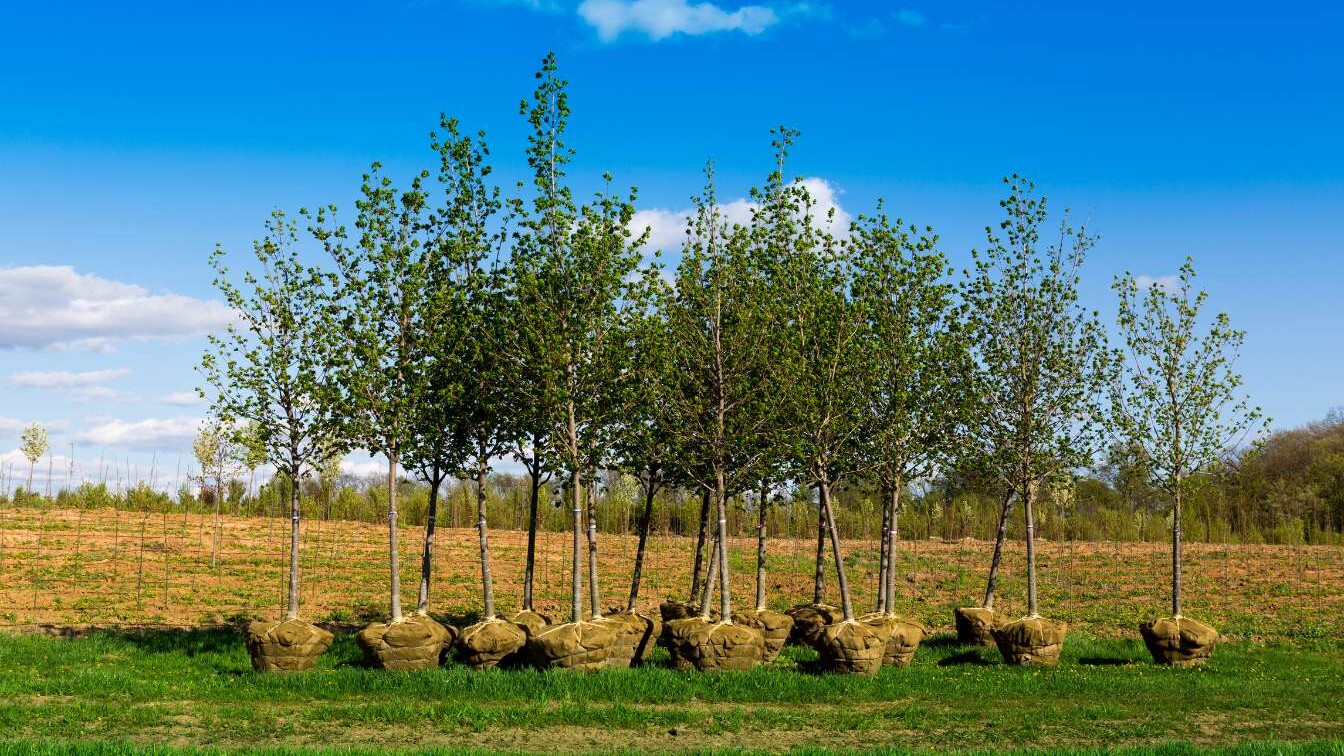
Dominika
Many people think that planting trees in autumn is inappropriate, and therefore prefer to avoid this season. However, the truth may be quite different. Let’s take a look at what is myth and what is fact when it comes to planting trees in autumn.
Myth: trees should not be planted in autumn
Many gardeners believe that planting trees in autumn is risky and can harm the plants. According to this view, trees should only be planted in spring to give them enough time to take root. However, this perspective overlooks the natural growth processes of trees and the opportunities that autumn offers when planning a custom outdoor space.
Fact: autumn can be ideal
Autumn actually offers many advantages, especially when carrying out a garden installation or planning a garden on a turnkey basis:
-
Soil is still warm – even as the air cools, the soil retains warmth, which supports root growth.
-
Less stress for the plant – lower temperatures and reduced water evaporation mean the tree experiences less stress.
-
Greater water availability – autumn rains ensure the root system can establish well.
-
Preparation for spring – a tree planted in autumn will be strong and ready for active growth in spring, giving your dream garden the perfect start.
When planning a turnkey exterior, autumn planting is often more practical and efficient, which is appreciated by anyone opting for a complete professional garden installation.
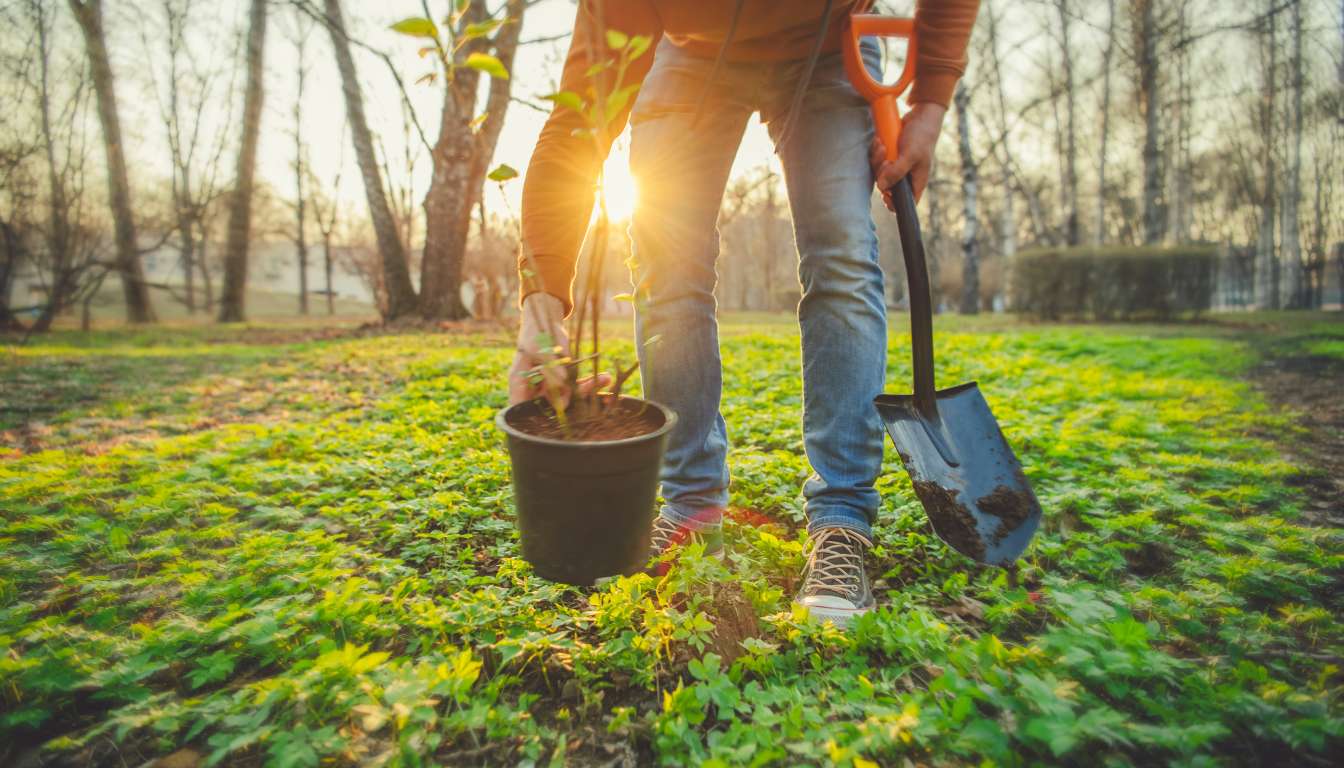
Tips for successful autumn planting
-
Choose trees with a well-developed root ball.
-
Plant them in a properly prepared hole with high-quality soil.
-
Water regularly after planting, especially during dry weather.
-
Mulching around the roots helps retain moisture and protects against sudden temperature changes.
Autumn tree planting is not a myth – it is a proven and often advantageous method when creating a turnkey garden. A properly prepared and planted tree has enough time to establish roots and can start growing vigorously in spring, gradually turning your dream garden into reality. If you want a professional garden installation in Žilina, Dream Garden can help you create a beautiful and functional turnkey exterior.
Similar posts
Myth vs. fact – trees are not planted in autumn
23. September 2025
How to plant bulbs in layers: the "lasagna" effect for longer flowering
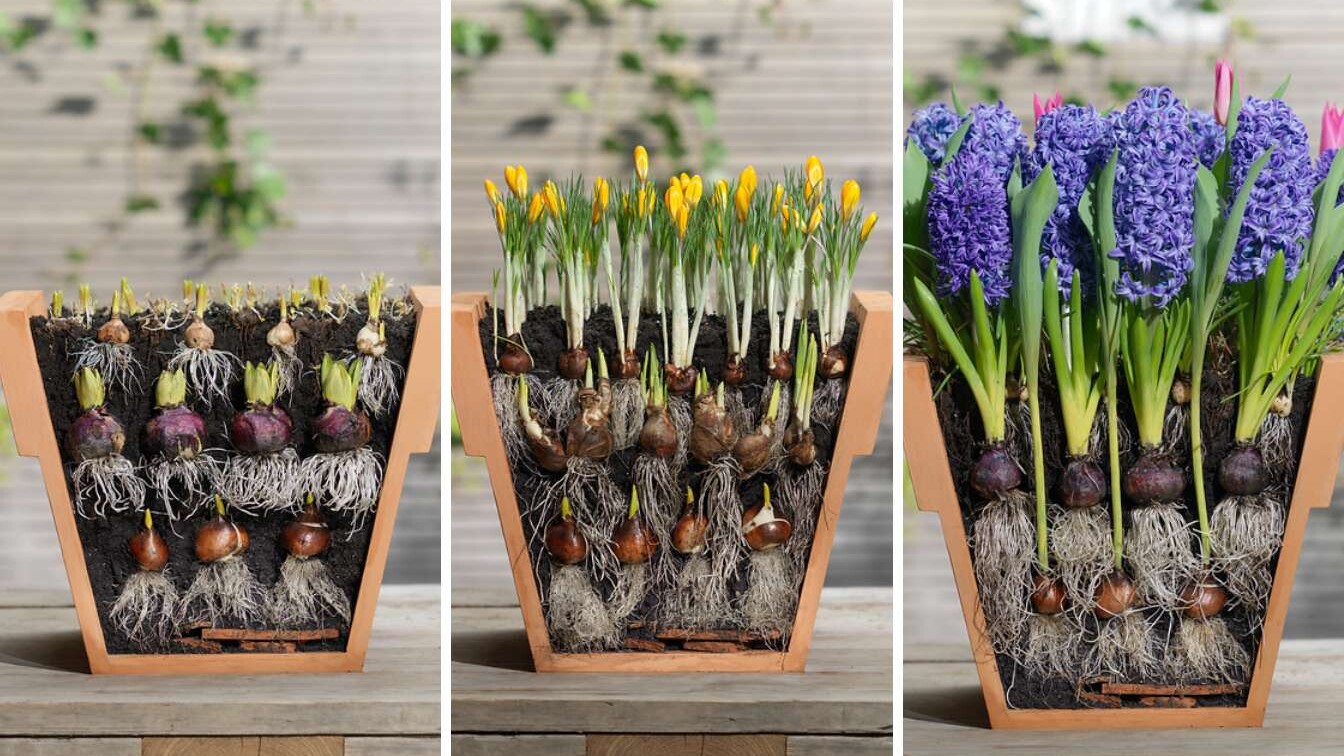
Dominika
Would you like your balcony or garden to be bursting with color for as long as possible? Try planting spring bulbs in layers this season—a technique known among gardeners as “lasagna planting.” Although the name may sound complicated, it is actually a simple planting method in which bulbs are placed in several layers on top of each other. The result is a beautifully blooming flower pot or flower bed that will bring you joy for months to come.
Why choose layered planting
Traditional bulb planting usually produces flowers at the same time of year. With the “lasagna” technique, plants alternate—when one finishes flowering, another takes its place. This makes the planting look livelier and lasts much longer. What’s more, even a complete beginner can easily master this technique.
Which bulbs are suitable
You can choose virtually any spring bulbs, but it is important to match them according to their flowering time. Great combinations include, for example:
- Tulips – they bloom later, so they are ideal for the bottom layer.
- Hyacinths or daffodils – suitable for the middle layer.
- Bluebells, irises, or anemones – early varieties that will brighten up the top layer.
Step-by-step procedure
- Choose a container – ideally a clay pot with a hole, which is more breathable than plastic and provides better insulation.
- Drainage layer – place gravel, expanded clay, or sand at the bottom to prevent water from accumulating around the bulbs.
- First layer – plant the deepest bulbs that bloom last (e.g., tulips) on top of about 10 cm of substrate. Place them close together.
- Second layer – add 5 cm of soil and plant other species that bloom earlier (e.g., hyacinths).
- Third layer – after another layer of soil, plant the earliest species (e.g., bluebells or anemones).
- Cover, water, and let them take root.
During winter, do not forget to water the substrate lightly (especially in January and February) so that the bulbs do not dry out. In severe frosts, wrap the container in burlap or cardboard.
You can use the same principle directly in the flower bed – this will create a colorful composition that will bloom gradually.

Tips for proven combinations
Colorful energy
- Bottom layer: Christmas Dream tulip
- Middle layer: Purple Sensation hyacinth
- Top layer: Atlantic Armenian crocus
Elegant white
- Bottom layer: Triumph Calgary tulip
- Middle layer: Carnegie hyacinth
- Top layer: White Splendour pasque flower
Planting bulbs in a lasagna style is a wonderful trick for enjoying a long spring full of color. And the best part is that it’s not rocket science. All you need is a suitable container, several types of bulbs, and a little creativity. You’ll be rewarded with a blooming balcony or garden that will delight you much longer than with traditional planting.

Similar posts
Myth vs. fact – trees are not planted in autumn
23. September 2025
Flying stairs – an original feature that will transform your garden beyond recognition
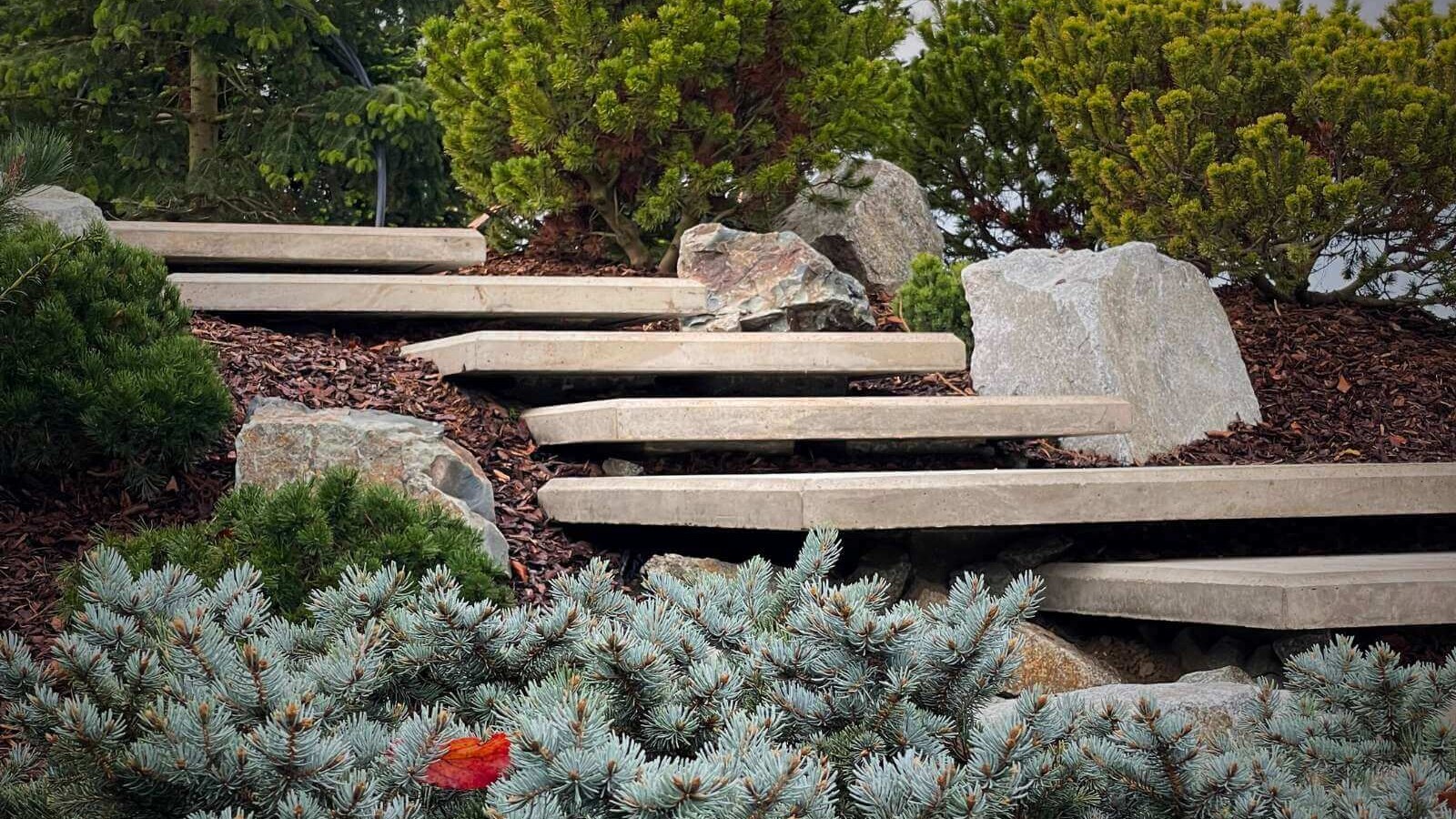
Dominika
Modern garden design is no longer just about greenery and flowers. Today’s exteriors combine nature with architecture and unique elements that give the space character. One such element is our “flying” staircase – a design feature that transforms an ordinary garden into an architectural experience.
How the idea for flying stairs came about
Our journey with this unique solution began in Brodno, where we implemented our first project. It didn’t take long for this idea to gain enormous attention – we are currently continuing in Banská Bystrica, and we already know that flying stairs will soon become a feature of many turnkey gardens throughout Slovakia.
Why flying?
Their uniqueness lies in the optical effect – the stairs appear to float above the lawn or gravel path. We achieve this effect through a precise technical solution that is our internal know-how. The result is a functional and safe element that also has high aesthetic value.

Stone as a modern element in the garden
adds luxury and timelessness to the exterior, perfectly harmonizing with greenery and creating a feeling of connection with nature. We have already written about how stone can change the character of an entire space and what its advantages are in our blog article “Stone in the garden”, where you will find plenty of inspiration and tips on how to use it. Combined with modern elements such as LED lighting, stone can create a true dream garden in your yard.
Custom design
Each garden project is unique for us. We design flying stairs precisely according to the space, style, and requirements of the owner. We can integrate them between the terrace and garden path, by the pool, into sloping terrain, or as part of connecting different levels of the garden.
We are ready to implement them at your place
If you long for an original element that will transform your garden into a modern and attractive space, we will be happy to design and implement flying stairs at your home. Just contact us and we will prepare a solution for you that combines functionality, aesthetics and unmistakable style.

Similar posts
The power of time and the value of our work on the exterior in Trnové – a look back after 5 years
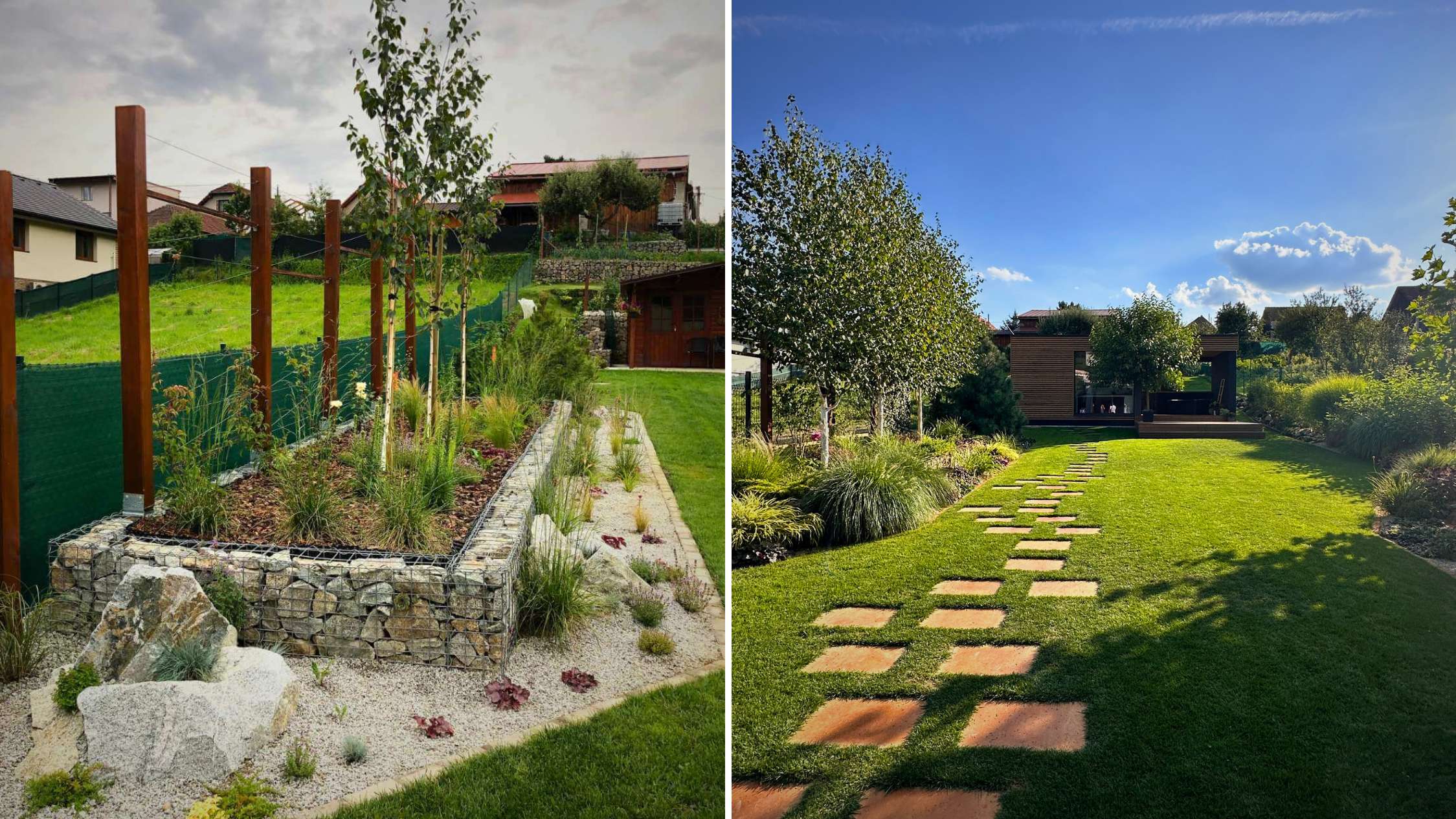
Dominika
Five years ago, we embarked on the creation of a garden in Trnové. It was a wonderful challenge – to transform an empty space into a green oasis of peace that would bring joy and relaxation to its owners. Today, five years later, we have returned here and are delighted to share the result with you.
How has the garden changed?
During the initial implementation, young trees and shrubs were planted and a lawn was laid. At that time, the garden was still in its infancy – it looked clean, but at the same time, it was clear that it would take time for it to reach its full beauty.
Today, the trees have strong crowns, the shrubs have grown, and the flowers create beautiful colorful corners. The garden has matured – it looks harmonious and natural, exactly as we planned when designing it. A look back after 5 years – the Trnové garden has confirmed that a high-quality design and careful implementation bring long-term value.
Why it is important to look back
Such returns are always a great pleasure for us. They show that a well-designed and implemented garden grows in beauty over time and increases the value of the owners’ investment. It is proof that our work does not end with planting – but that thoughtful design and proper care bring long-term effects.

Inspiration for you
If you are thinking about renovating or modernizing your own garden, this shot from Trnové is a beautiful example of how results do not come overnight – but patience always pays off.
Take a look at the photos from five years ago and the current shots – you’ll see what time and good garden design can do.
Similar posts
Stone in the garden: a timeless choice for garden design and turnkey exteriors

Dominika
Stone is one of the most popular natural materials in garden architecture and modern garden design. Whether you are planning to build a garden or dreaming of a turnkey garden, stone will bring durability, character, and unique aesthetics to your exterior.
Why choose stone for your garden?
- Natural beauty and originality: Each stone is unique in its shape, structure, and color, giving your exterior a timeless, one-of-a-kind look.
- Durability and minimal maintenance: Natural stone is resistant to weather conditions, lasts for decades, and is easy to maintain.
- Functionality: Stone is ideal for paved areas, walkways, flower bed edges, ponds, and retaining walls, but also as a stand-alone feature in a relaxation area or modern turnkey exterior.
Current trends in garden design 2025
Contemporary garden designs are based on simplicity, natural materials, and ecology. Stone combined with wood, greenery, and large-format paving creates a harmonious yet modern look for gardens. The emphasis is on sustainable solutions that require minimal maintenance while giving the space character and functionality.
Turnkey exteriors with an emphasis on detail
Turnkey garden and exterior services ensure that every detail (from stone paving and decorative gravel to stones for ponds) is not only aesthetic but also practical. An experienced garden designer will propose combinations according to your ideas, taste, and maintenance requirements.
Practical tips for using stone
- Sidewalks and paths – made of cobblestones or slabs
- Stone walls – for dividing the garden, supporting slopes, or decorative elements
- Rockeries, ponds, and dry streams – for a natural effect
- Flower bed borders and modern solitaires – aesthetics and practicality
- Facade cladding or terrace paving – connecting the house with the garden
Stone in the garden fits perfectly into any style – from traditional to Provencal to minimalist or industrial – and becomes the cornerstone of a lasting solution for any exterior.
Creating a garden with stone: why work with professionals?
Stand out, optimize maintenance and costs, and create a functional, tailor-made space – that’s what working with experts will bring you. An experienced team will prepare a garden design for you, recommend the right type and arrangement of stone, take care of the comprehensive implementation of a turnkey garden or exterior, and bring your vision to perfection.
Similar posts
How long does it take to build a garden on your own? And why do you love us when you come to us for a renovation?

Dominika
Building the garden of their dreams on their own is the dream of many homeowners and gardeners who want everything to be exactly as they imagine it while also saving money. At Dream Garden, we love it when our clients build their own gardens. Why? Because we know that after a while they often come to us with a request for a professional redesign or addition, and we are happy to help take their gardens to a whole new level.
How long does it take to create a garden on your own?
The time needed to create a garden on your own depends on many factors:
The size and complexity of the project
A smaller garden with a simple lawn and a few flower beds can take anywhere from a few weeks to a few months, while more extensive exteriors with a terrace, Hunter irrigation, drainage, and various features often require months to years of work.
The owner’s experience and time availability
If you have the basics of garden design and only have a few hours a week to spare, the implementation will take longer. It is often the case that people embark on such projects during the weekends.
Materials and technologies used
Laying a seeded lawn or implementing an extensive green roof requires time for rooting and growth. Complex irrigation systems and lighting require professional installation or at least professional consultation.
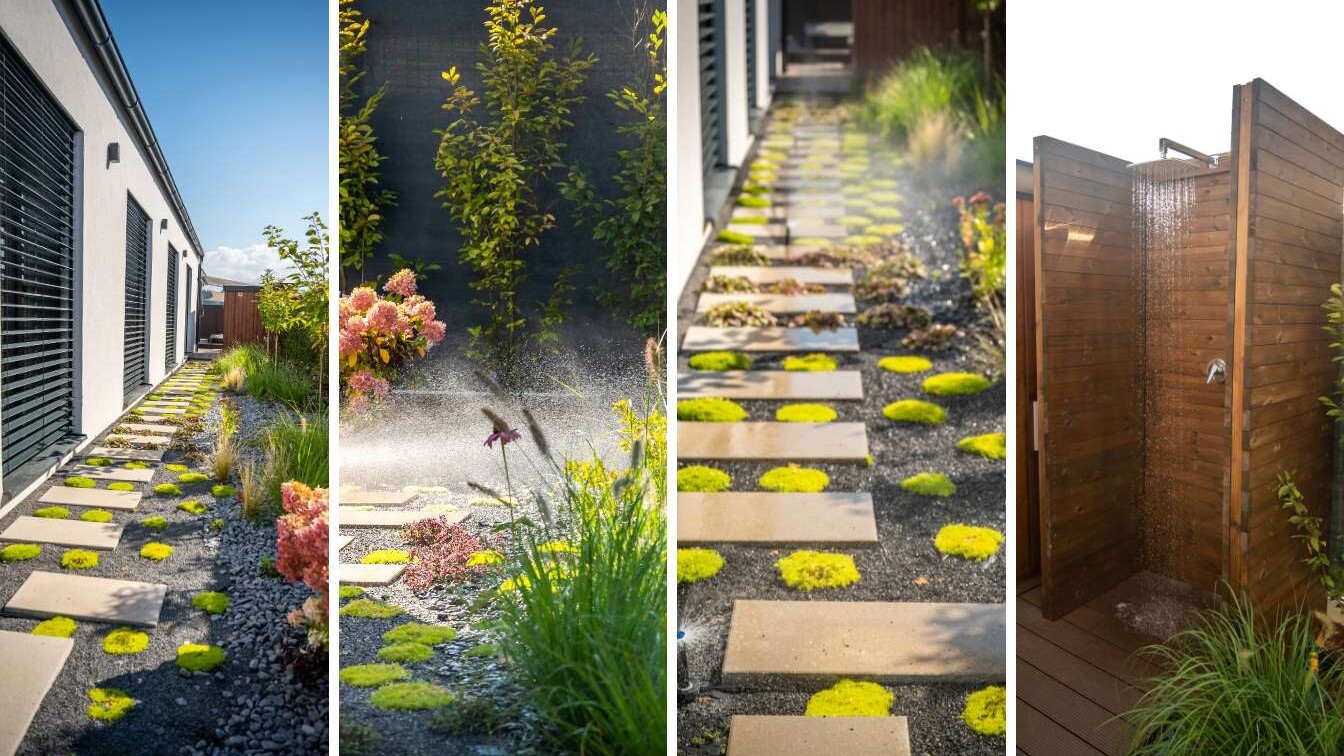
Why is it worth renovating with Dream Garden?
When you decide to renovate or add to your garden professionally, we offer:
Quality design and customised exterior
We use tools for planning and budgeting garden projects directly in Slovakia, guaranteeing that the result will be harmonious, functional and modern.
Optimization of care and maintenance
We will help you set up Hunter automated irrigation, proper lighting, drainage, and other solutions that reduce maintenance and increase the efficiency of your garden.
Pet-friendly exterior
We will design dog houses and other elements that will match the overall style of your garden and take care of your four-legged family member.
Green roofs and low-maintenance gardens
We advise on and implement green roofs, which are environmentally friendly and cost-effective, and low-maintenance gardens, ideal for the Slovak climate.
Your journey with a self-help garden doesn’t have to end there – it’s just the beginning!
We love it when our clients come to us, because then we can combine their personal efforts and hands with our professional experience. Because we not only design, but also carefully maintain and develop gardens so that they thrive for a long time and bring joy to the whole family. If you are planning to build a garden yourself, we can also support you later on. And if you want to plan or implement a professional exterior, don’t hesitate to contact us.





